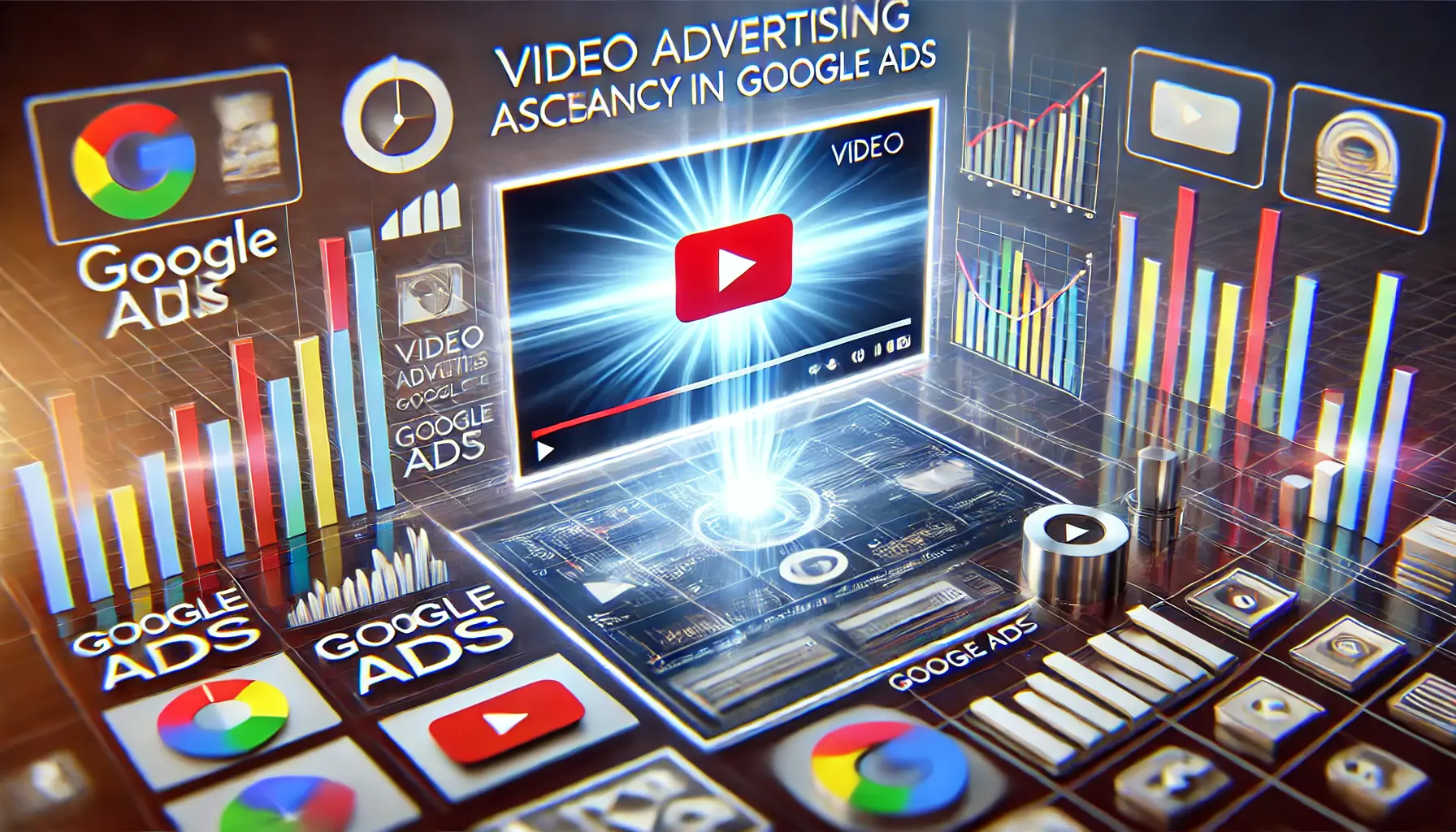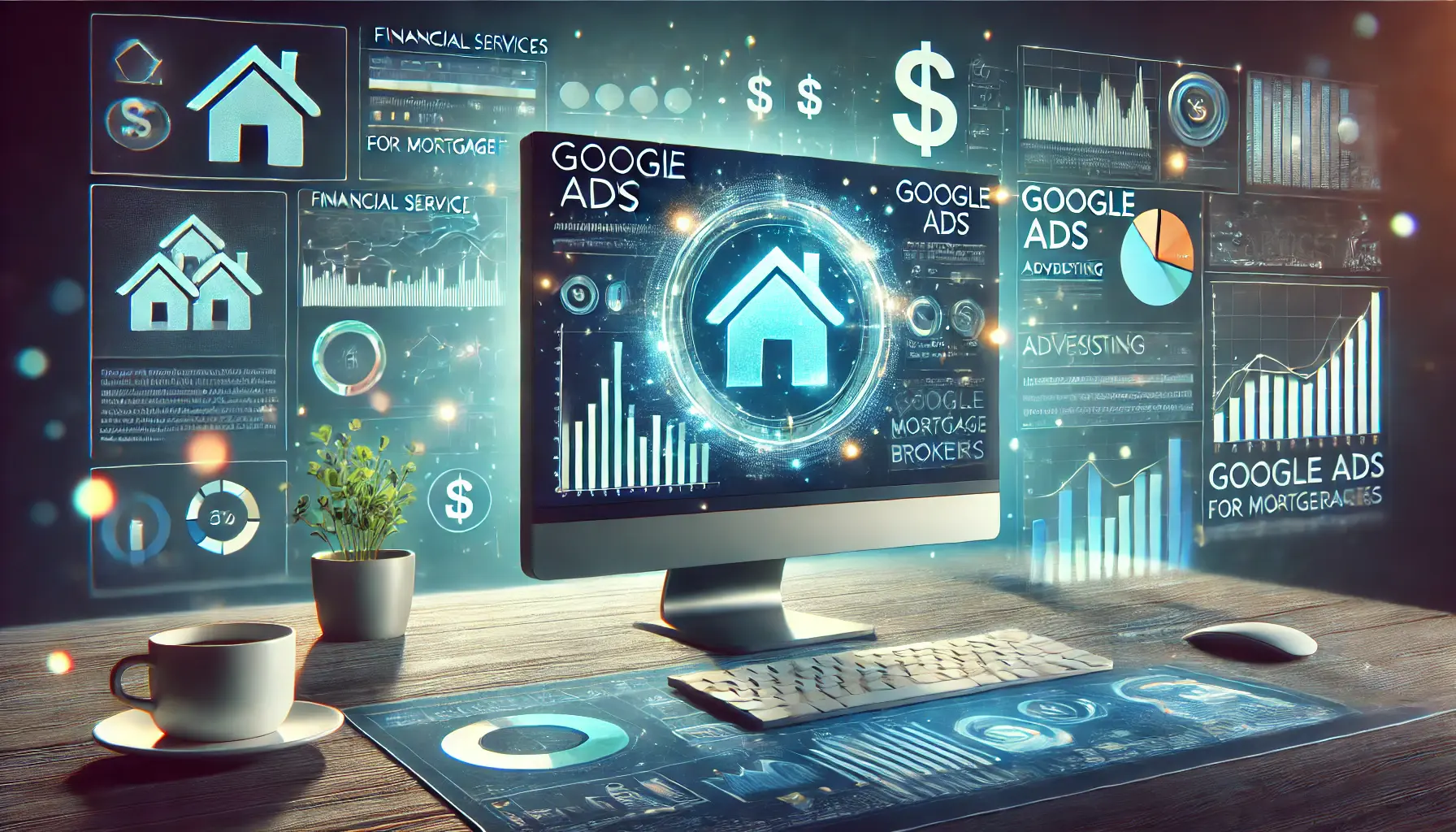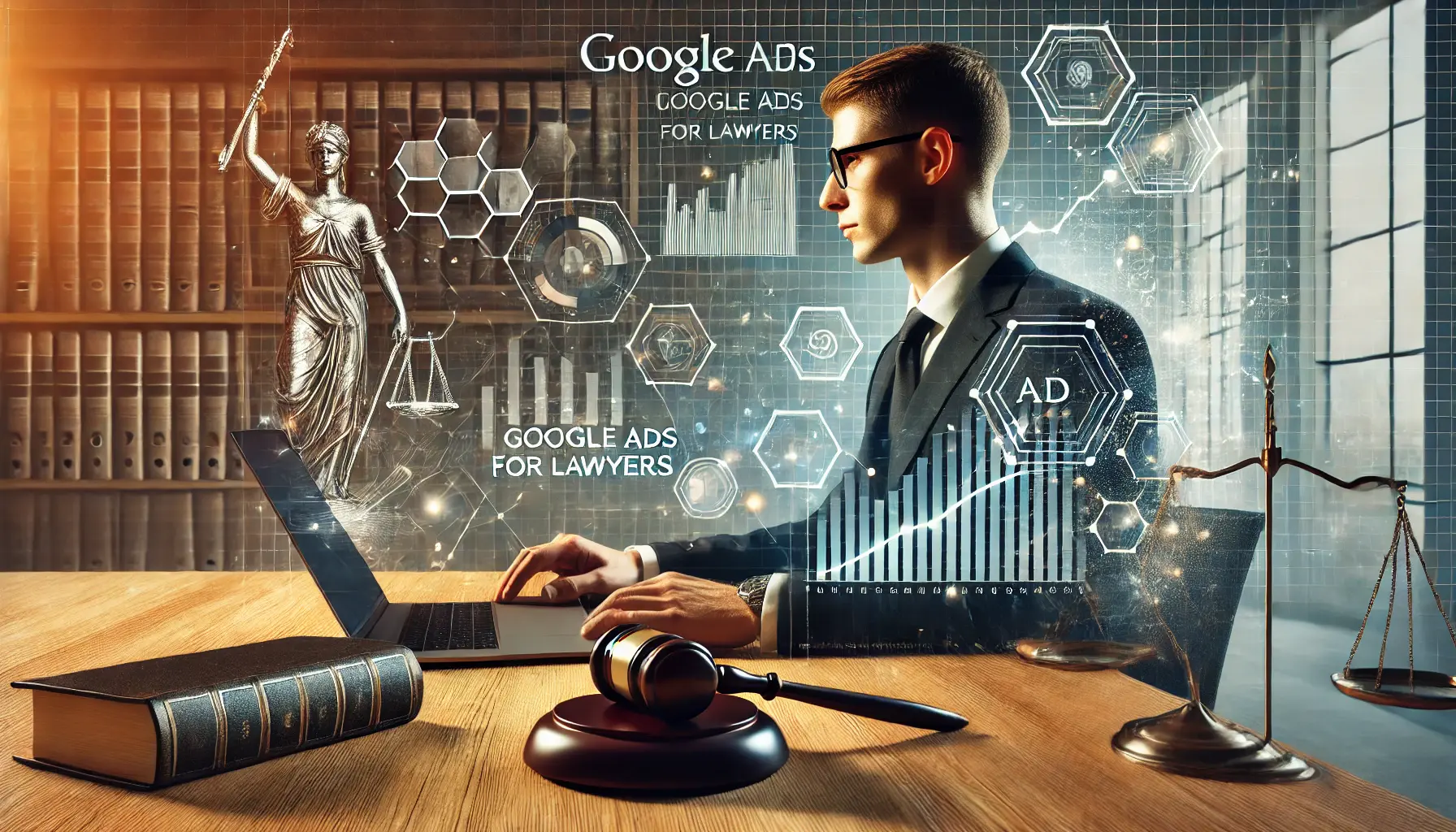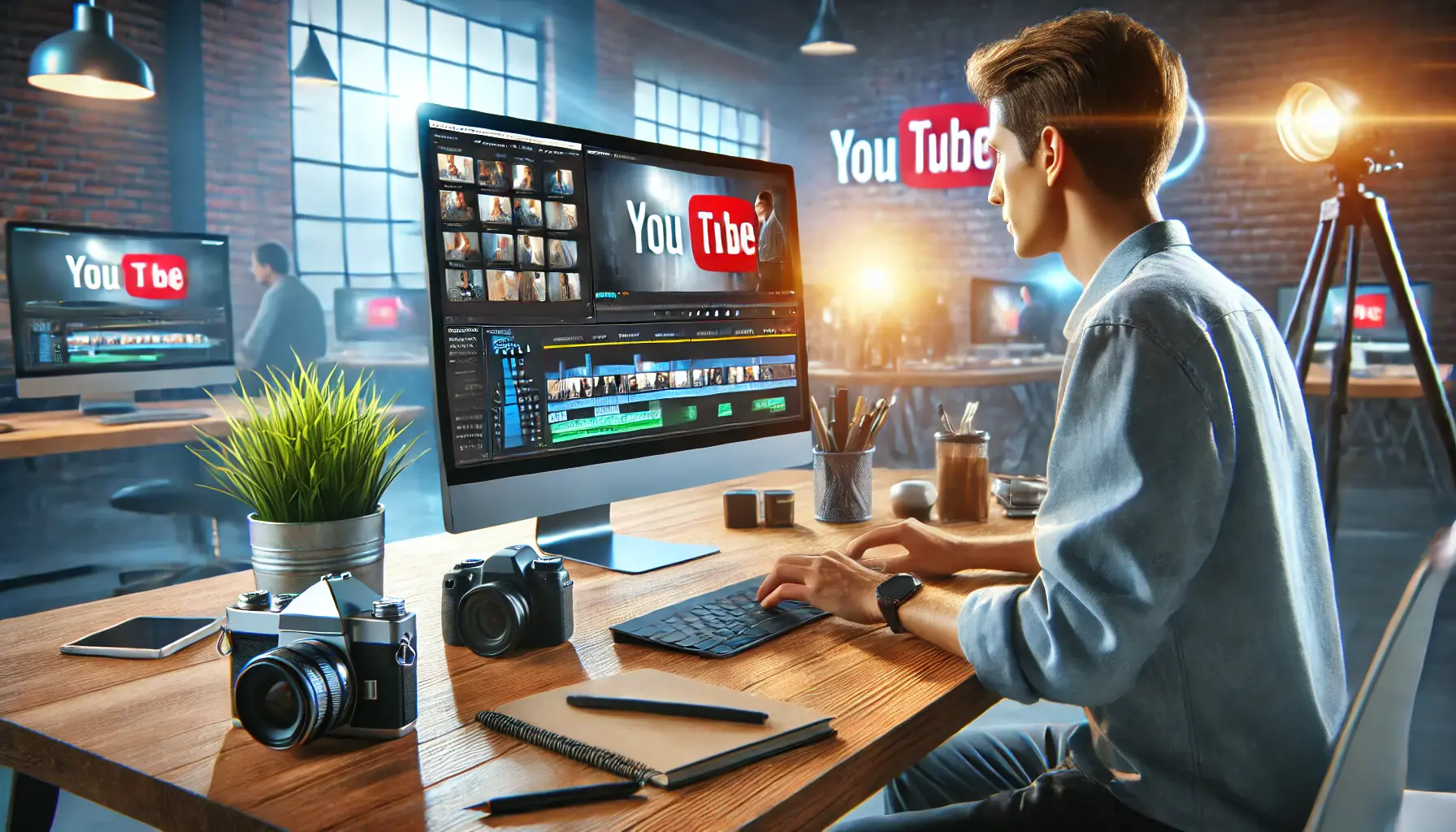Video advertising has rapidly grown as one of the most effectual and powerful tools in digital marketing.
From navigating your favorite website to watching content on YouTube, video ads are just about everywhere.
They engage, educate, and influence consumer behavior in ways no other form of ad format can.
But how do you make this dynamic format work for you in Google Ads?
In this article, we are going to take a closer look at everything related to video advertising in Google Ads: how to set up your campaigns, optimize their performance, and create successful video ads that actually drive results.
Now, let’s dive into the world of video advertising and learn how it can work for your enterprise.
- Introduction to Video Advertising in Google Ads
- How to Set Up a Successful Video Ad Campaign
- Optimizing Video Ads for Maximum Performance
- Advanced Tips for Google Video Ads
- What the Future of Video Advertising in Google Ads Looks Like
- Mastering Video Advertising with Google Ads
- Google Ads Video Advertising FAQs
Introduction to Video Advertising in Google Ads
Video advertising is a cornerstone of modern marketing, and Google Ads is an unmatched platform to utilize this format effectively.
But what exactly is video advertising, and why would you want to use it as part of your marketing mix?
Video ads are short, interesting pieces that showcase your brand, product, or service.
Unlike image or text ads, video allows storytelling, engages emotionally with your audience, and describes complex ideas in a simple, visually attractive way.
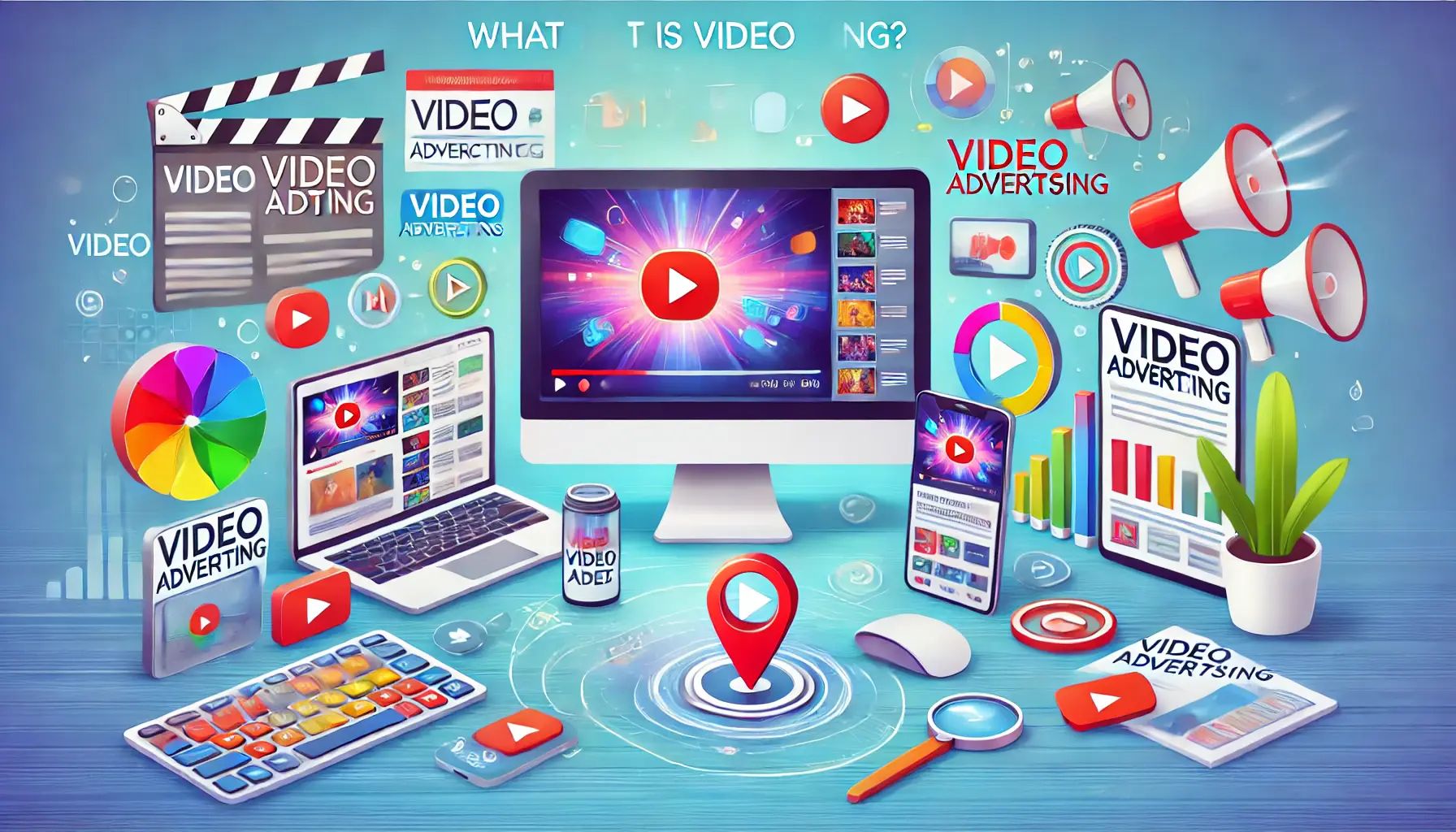
A visual representation of video advertising across various digital platforms.
What is Video Advertising?
Video advertising refers to the display of video content as a means of promoting a product or service.
These ads can appear across different digital platforms, but within Google Ads, they show up most frequently on YouTube and the Google Display NetworkA collection of websites, including Google sites, where ads can appear..
Video ads come in various lengths, from a few seconds to several minutes, depending on how much information you want to convey.
With Google Ads, you can reach millions of viewers with video advertising.
By creating a video ad, you can target specific audiences based on their interests, location, or even past behaviors.
This makes video ads an especially versatile tool for marketers.
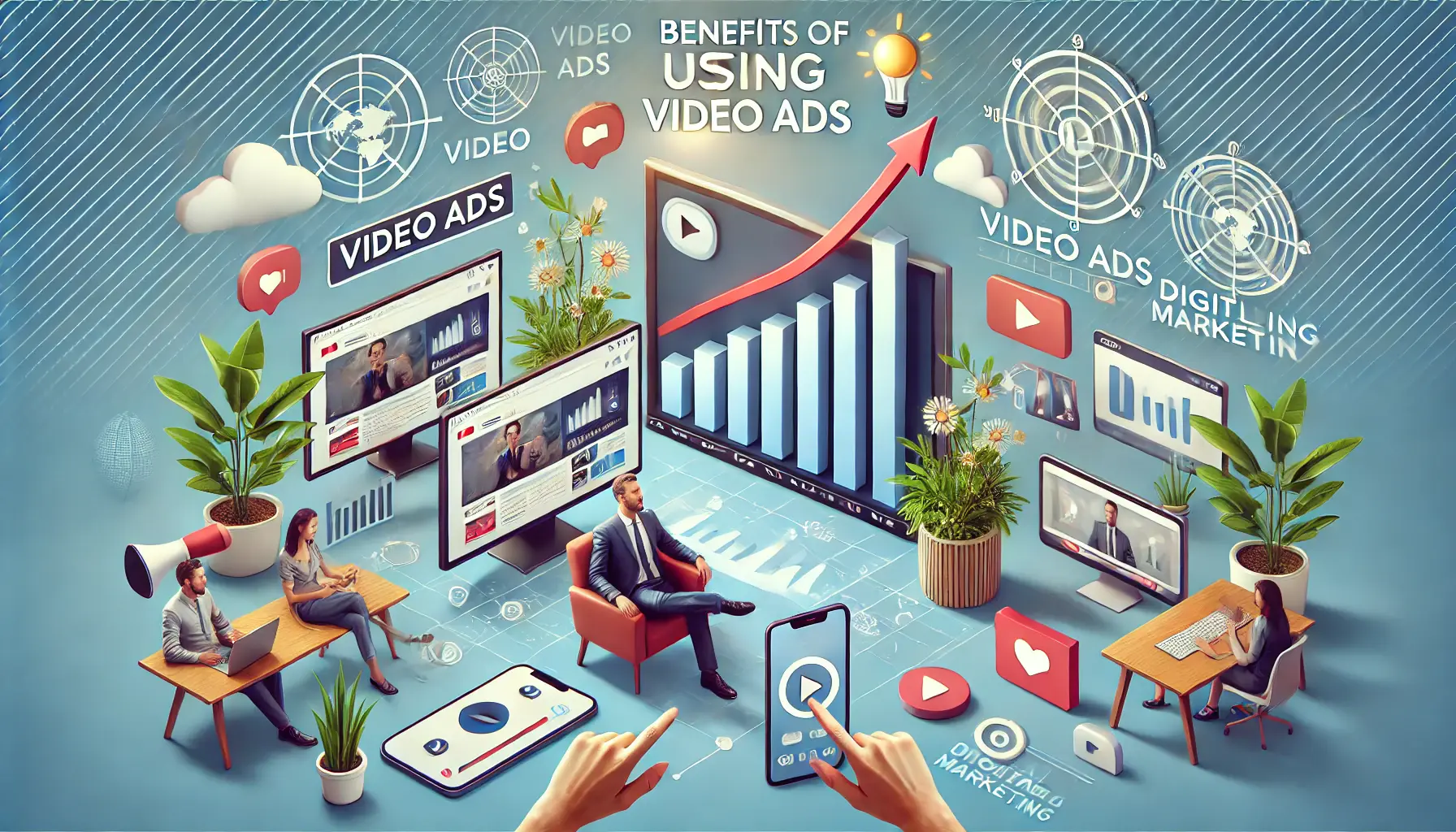
A visual representation of the benefits of using video ads across various devices, highlighting growth and engagement.
Benefits of Using Video Ads
Why should you focus on video advertising in Google Ads?
Here are a few key benefits:
- Increased Engagement: People are more likely to engage with video content compared to text or images. Videos capture attention more promptly and maintain viewership for longer.
- Better Brand Awareness: Video ads create a stronger visual relationship with your audience, enhancing brand recall and recognition.
- Higher Conversion Rates: Video ads can convert viewers into customers more effectively than other forms of advertising, especially when done right.
- Flexible Targeting Options: With Google Ads, you can fine-tune your video ads to reach the exact audience you need.
However, the key to making video advertising a success lies in understanding how to set up and optimize your video campaigns effectively, which we will explore in depth in the following sections.
Video advertising on Google Ads is crucial for businesses looking to engage their audience effectively, and it’s important to understand the fundamentals before diving into advanced strategies.
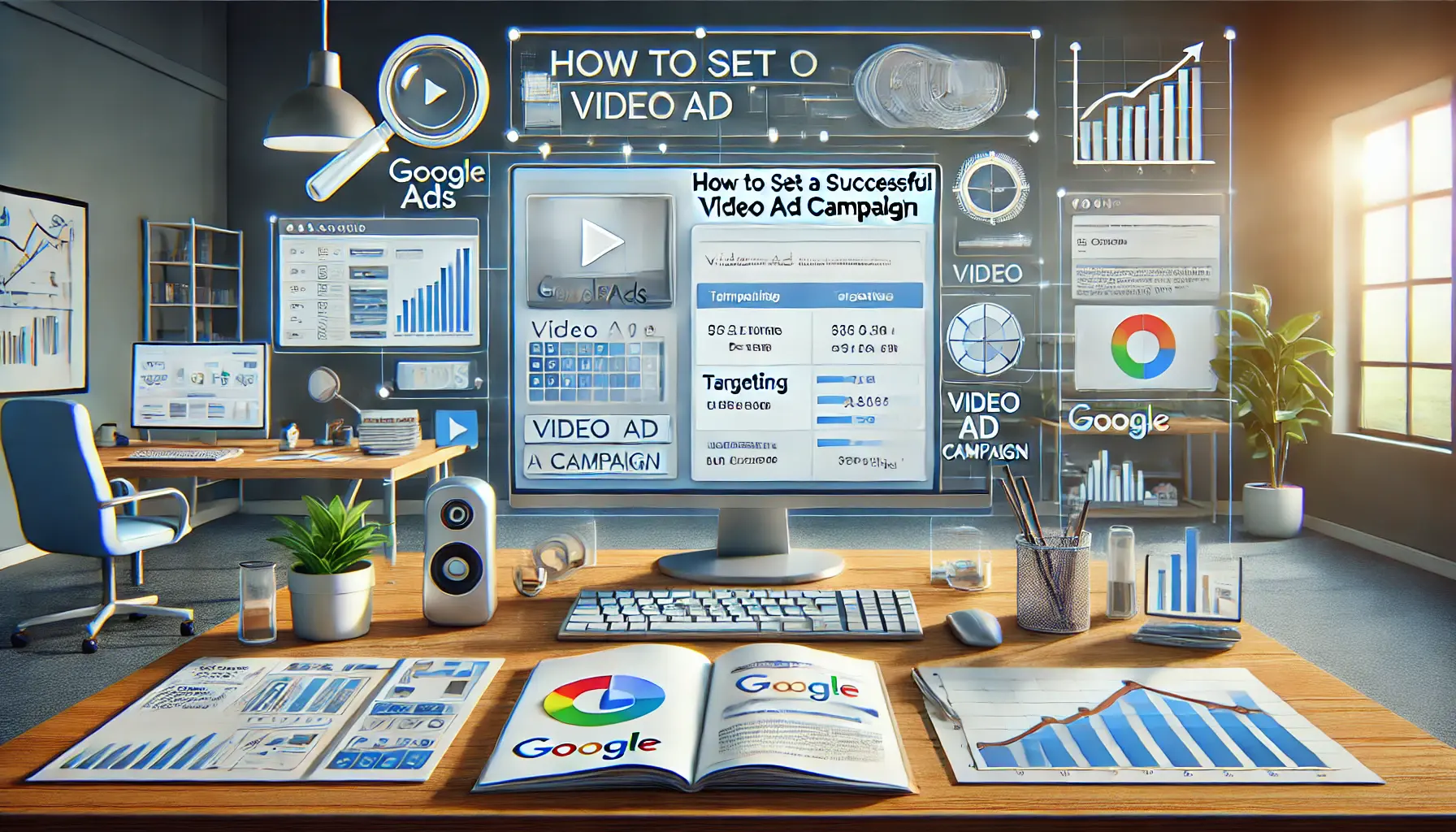
A visual representation of the process of setting up a successful video ad campaign in Google Ads.
How to Set Up a Successful Video Ad Campaign
Setting up a successful video ad campaign involves more than just uploading a video in Google Ads; it requires strategic planning and attention to detail.
You need to know how to use the platform’s tools to your advantage.
Whether you’re new to video advertising or want to maximize the results of your next campaign, there are several steps you can take to ensure it yields the desired outcomes.
When done correctly, video advertising can significantly boost your brand’s visibility and increase conversions.
But to get the most out of your video ad campaign, you must start by identifying your goals and target audience before moving into more technical details like video ad format and targeting options.
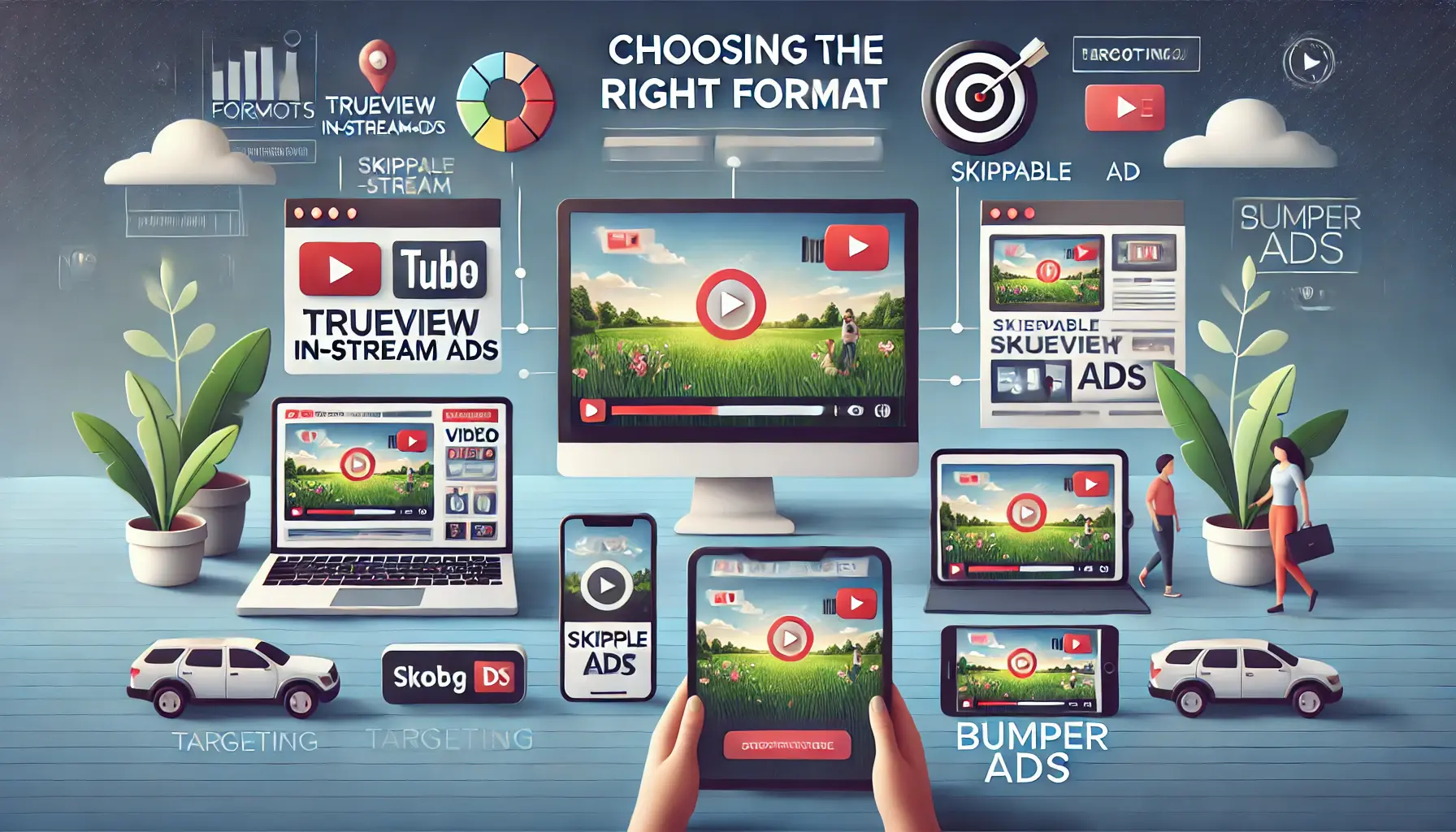
A visual representation of different video ad formats across multiple devices.
Choosing the Right Format
Google Ads offers several video ad formats, each serving different purposes and appearing in different places.
Choosing the right format for your video advertising campaign is key to its success.
Here are some of the most common formats:
- TrueView In-Stream Ads: These ads play before, during, or after other videos on YouTube and can be skipped after 5 seconds. This means the first few seconds of your ad need to be attention-grabbing. TrueView in-stream ads are cost-effective, as you only pay when viewers watch the entire ad or at least 30 seconds of it.
- TrueView Discovery Ads: These ads appear in YouTube search results, related videos, or on the YouTube homepage. They encourage viewers to click and watch, making them ideal for discovery and engagement.
- Non-Skippable In-Stream Ads: These are 15- to 20-second ads that cannot be skipped. While they guarantee full viewership, they can be intrusive and should be used carefully to avoid frustrating the audience.
- Bumper Ads: These are short, 6-second non-skippable ads that play before a video. They are perfect for brand awareness and delivering quick, memorable messages. For brand awareness, bumper ads may be effective, while for conversions and more in-depth engagement, TrueView in-stream ads are a better choice.
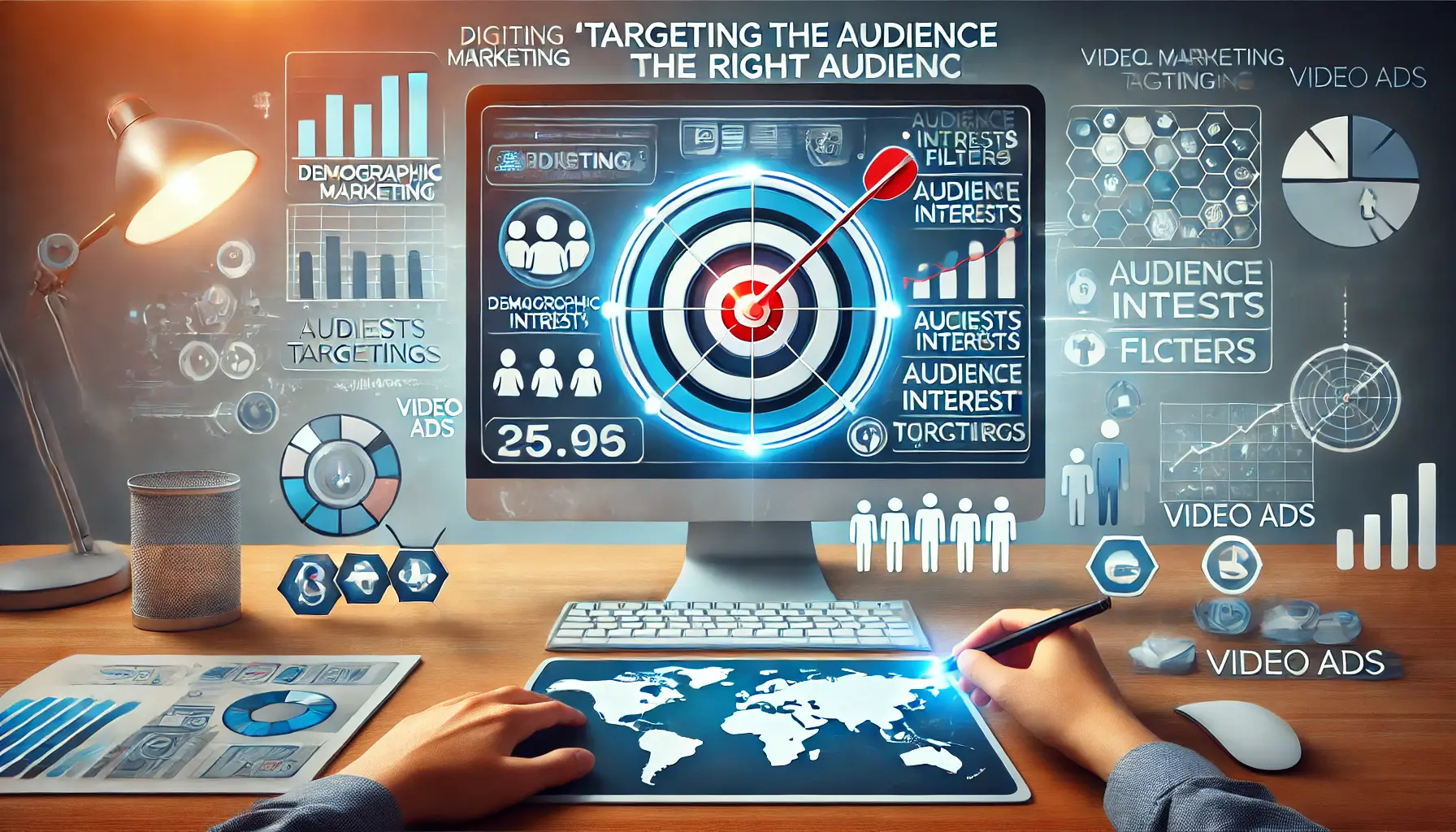
A visual representation of the tools and precision involved in targeting the right audience for video ads.
Targeting the Right Audience
Once you’ve chosen your video format, the next step is targeting the right audience.
Google Ads offers various targeting options to help you reach the most relevant viewers:
- Demographic Targeting: Target audiences based on age, gender, parental status, or household income.
- Interest-Based Targeting: Target people based on their interests in specific topics, such as fitness, technology, or travel.
- Remarketing: Target users who have previously interacted with your website, app, or content. This is a powerful way to reconnect with potential customers who are already familiar with your brand.
- Custom Audiences: Build custom audiences based on keywords, URLs, or app interactions to create highly specific targeting.
Effective audience targeting ensures that your video ads reach people who are most likely to be interested in your offering.
Poor targeting can result in wasted ad spend and lower returns on investment.
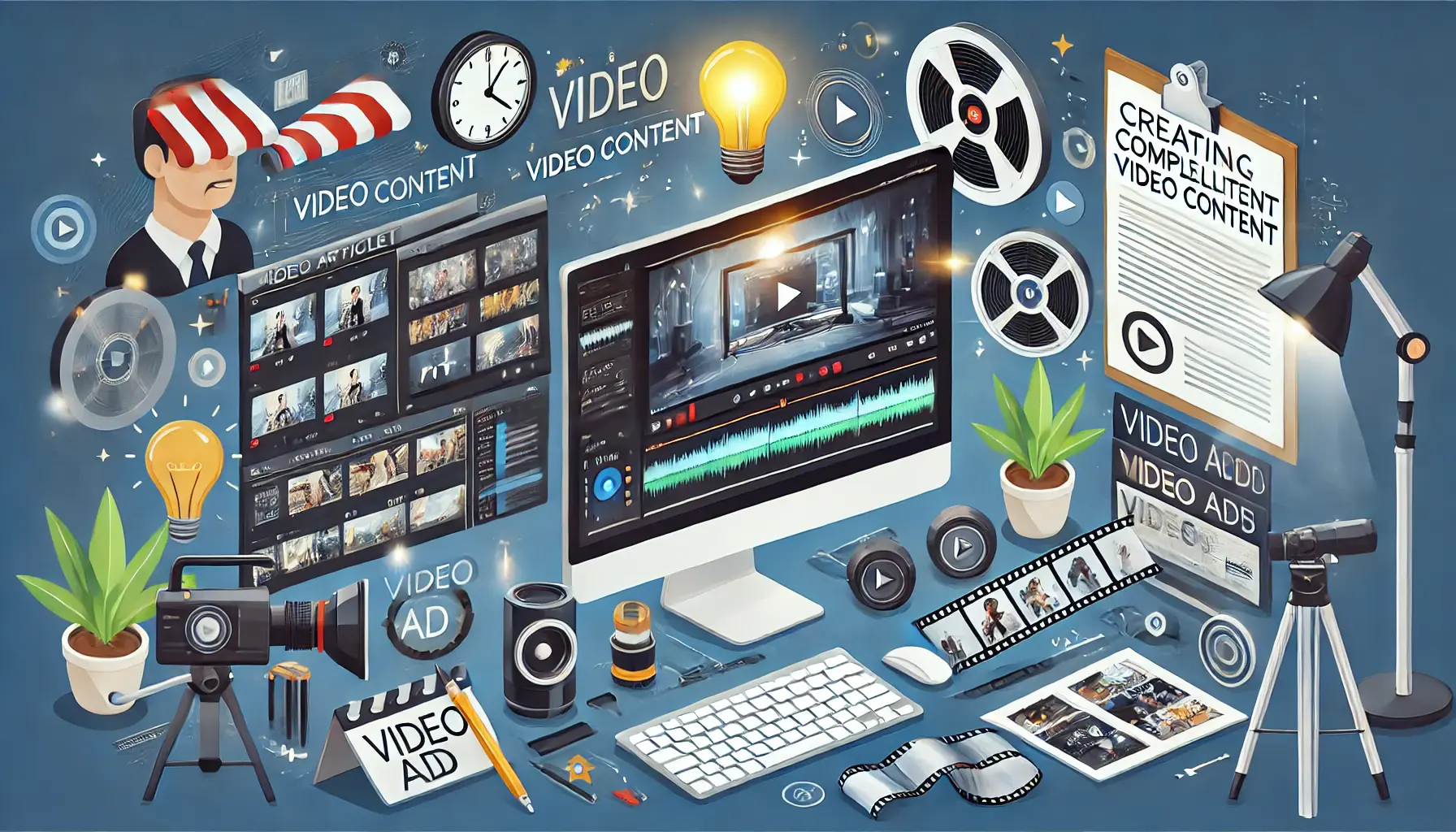
A visual representation of the process of creating compelling video content for advertising.
Creating Compelling Video Content
The success of your video ad campaign depends heavily on the quality and appeal of your video content.
Here are some tips for creating video ads that grab attention and drive action:
- Start Strong: The first 5 seconds are crucial in video advertising. You need to hook your audience immediately to prevent them from skipping the ad.
- Keep It Short: Shorter ads, typically 15-30 seconds, tend to perform better as they respect the viewer’s time. Bumper ads, which last 6 seconds, are especially effective for brand awareness.
- Always Include a Clear Call-to-Action (CTA): Tell your audience what to do next, whether it’s clicking a link, visiting your website, or making a purchase. A clear CTA can significantly boost conversion rates.
- Optimize for Mobile: Most viewers will watch video ads on mobile devices, so ensure your content is mobile-friendly with clear visuals and text that is easy to read on smaller screens.
By following these steps, you can set up a video advertising campaign in Google Ads that effectively reaches your target audience and achieves your marketing goals.
A successful video ad campaign starts with setting clear goals, selecting the right audience, and understanding the technical setup in Google Ads.
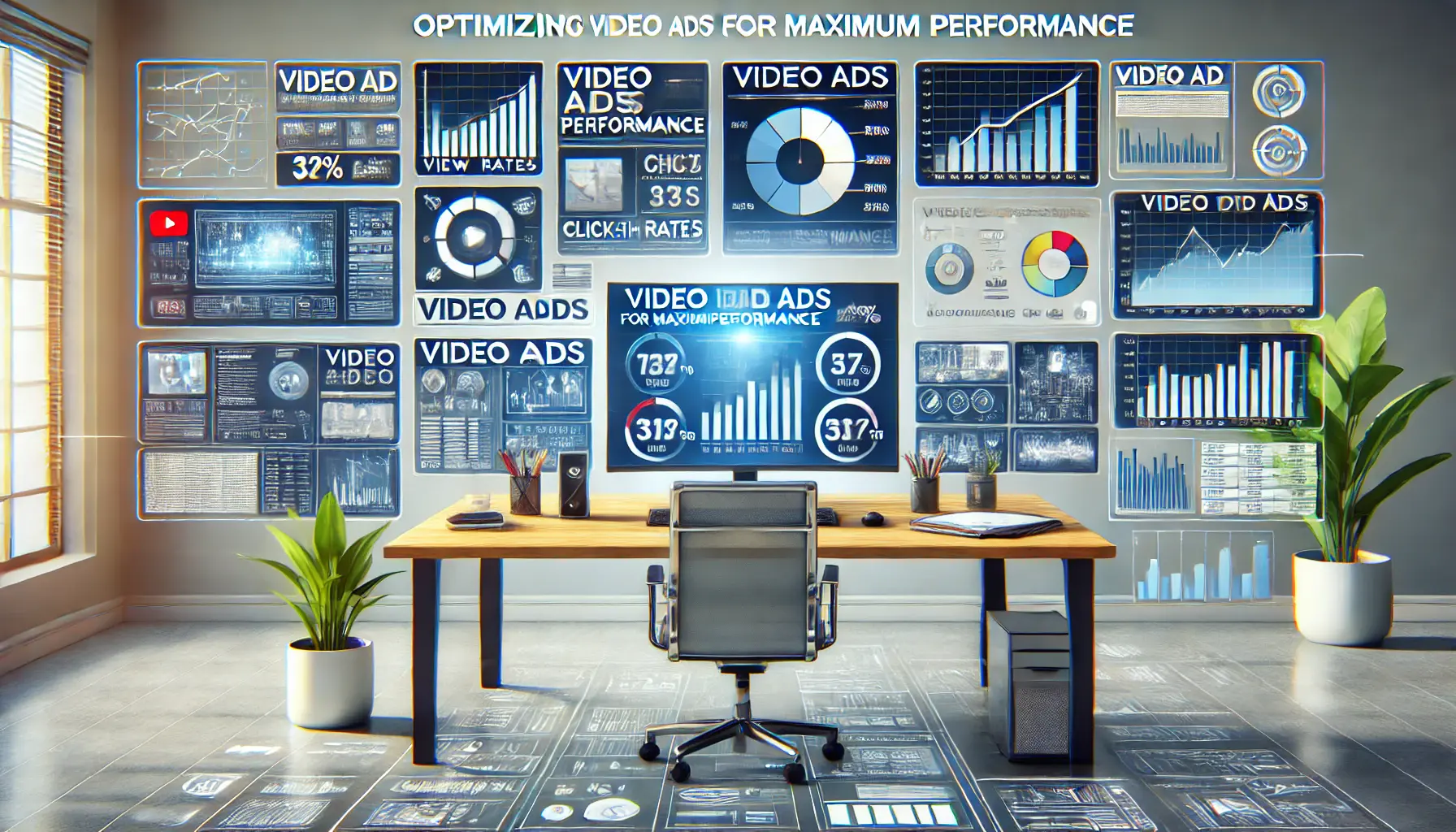
A visual representation of optimizing video ads for maximum performance using data-driven analytics and testing.
Optimizing Video Ads for Maximum Performance
Once your video ad campaign has launched in Google Ads, the real work begins: optimizing your ads for maximum performance.
It’s not sufficient to simply launch a campaign; you have to continually monitor and refine your approach if you want to ensure you get the best results for every dollar you spend.
Here, we will discuss some of the tried-and-tested methods for optimizing video advertising performance.

A visual representation of using YouTube as a platform for distributing video ads across different devices.
Using YouTube for Video Ads
YouTube, with more than 500 hours of video uploaded every minute, is the world’s largest video-sharing platform.
To maximize your video advertising campaign on YouTube, consider the following:
- Target Active Viewers: YouTube offers TrueView for Action, enabling you to target viewers who are more likely to take action, such as visiting your site or making a purchase.
- Use Advanced Analytics: YouTube provides robust analytics showing how viewers are interacting with your video ads. Use metrics like watch time, audience retention, and engagement rates to refine your strategy.
- Optimize for Engagement: YouTube rewards videos that receive more engagement. Encourage viewers to like, share, and comment on your video ads to increase their visibility.
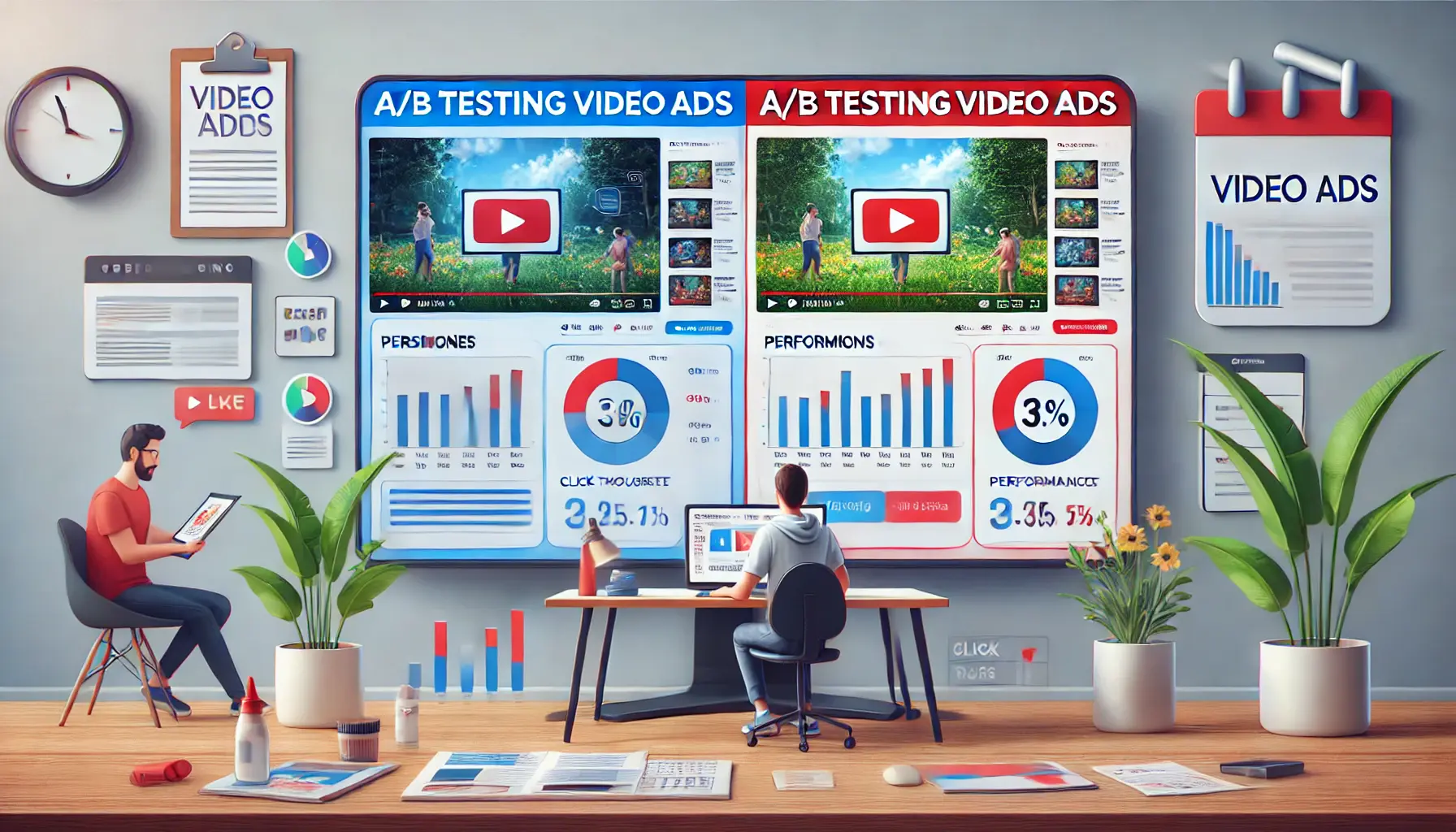
A visual representation of A/B testing two versions of video ads to optimize performance.
A/B Testing Video Ads
A/B testing is a critical component of optimizing video advertising campaigns.
By creating two versions of an ad and testing them against each other, you can determine which one performs better.
Here’s how to set up A/B testing:
- Test Various Ad Formats: Run different video ad formats, such as TrueView in-stream vs. bumper ads, to see which format best meets your objectives.
- Test Different CTAs: Use various call-to-action phrases to see which resonates best with your audience and drives the most conversions.
- Analyze Results: Use Google Ads’ built-in analytics to measure the effectiveness of each variation. Key metrics to monitor include view rates, click-through rates (CTR), and conversions.
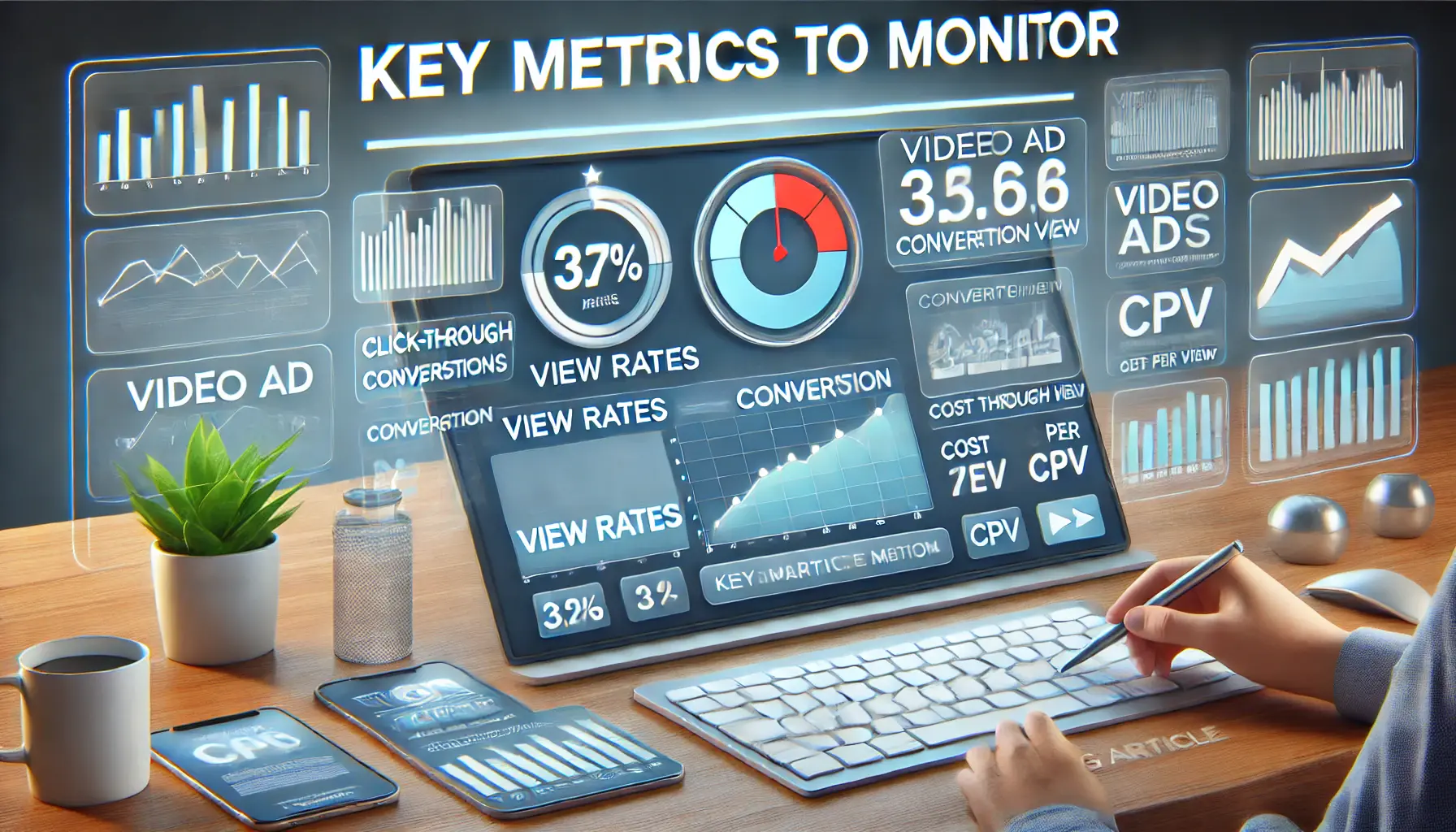
A visual representation of monitoring key metrics for video ad performance optimization.
Key Metrics to Monitor
To optimize your video ads, it’s essential to track the right metrics.
The following metrics are key indicators of your video advertising performance:
- View Rate: This metric shows how many people watched your video ad compared to how many were served the ad. A higher view rate indicates more engaging content.
- Click-Through Rate (CTR): CTR represents how well your ad is capturing the interest of viewers and driving them to your website. It is measured by the percentage of viewers who clicked on your ad after watching it.
- Conversion Rate: Conversion rate measures the percentage of viewers who completed a desired action, such as making a purchase, after watching your ad. This is a critical metric in understanding the ROI of your campaign.
- Cost Per View (CPV): CPV refers to the price you pay for each view of your video ad. Maintaining a low CPV while achieving a high view rate is a sign of an efficient campaign.
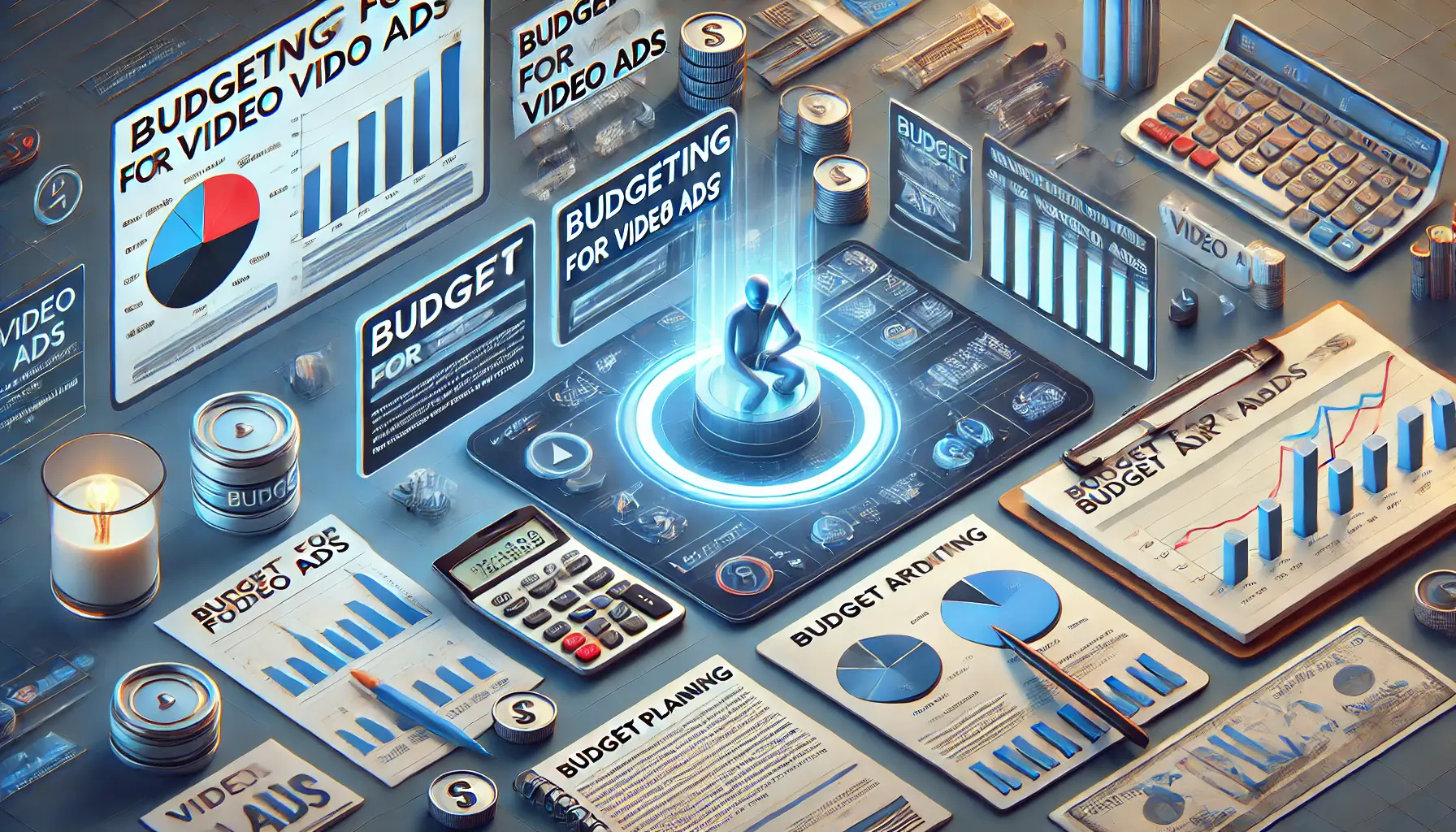
A visual representation of budgeting and financial planning for video ad campaigns.
Budgeting for Video Ads
Effective budgeting is crucial for maximizing the return on investment (ROI) from your video advertising campaign.
Here are some budgeting tips:
- Set a Daily Budget: Determine a daily budget that aligns with your overall campaign goals. This ensures your ads run consistently without overspending.
- Utilize Bid Strategies: Google Ads offers several bid strategies to help focus on different goals. For instance, you can use Target CPA (Cost Per Action) bidding if your goal is conversions or maximize conversions for more traffic.
- Allocate More Budget to High-Performing Ads: Once you’ve identified the best-performing ads through A/B testing and metric analysis, allocate a larger portion of your budget to those ads to maximize their impact.
By following these optimization strategies, you can ensure that your video advertising campaign in Google Ads delivers maximum performance and drives meaningful results for your business.
Once the campaign is live, continually optimizing for key metrics like CTRClick-Through Rate, a metric that measures the ratio of clicks to impressions for an ad., view rate, and conversion rate is essential to maximize ad performance.
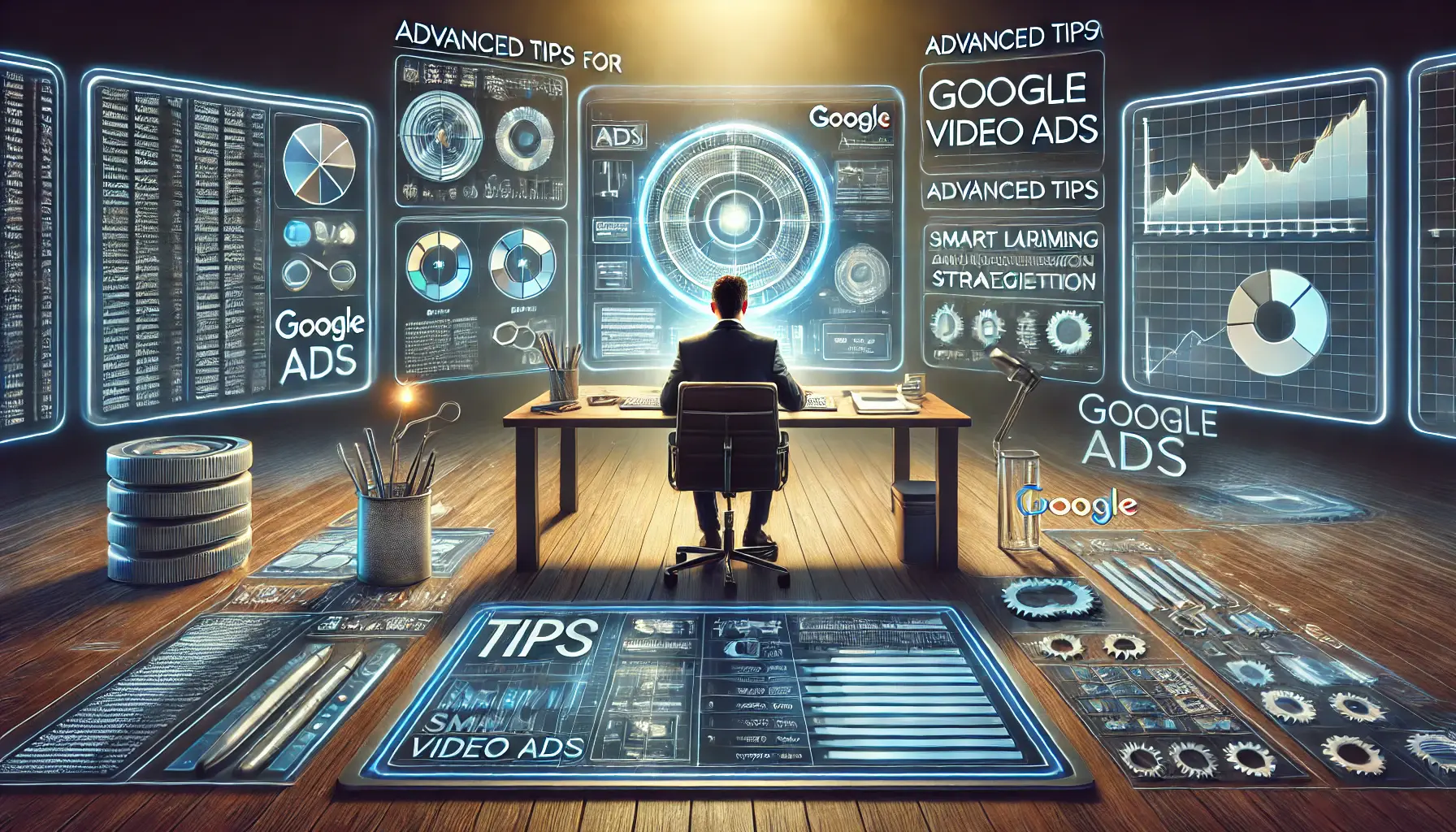
A visual representation of advanced techniques for optimizing Google video ads.
Advanced Tips for Google Video Ads
Once you feel confident running basic video ads within Google Ads, you’re ready to learn some advanced strategies that will set you apart from competitors and ensure you’re maximizing the effectiveness of your video advertising campaign.
The following advanced techniques will take your video advertising efforts to the next level by incorporating innovative technologies along with smarter targeting methods.
In this section, we will explore the best advanced strategies to enhance your video ads.
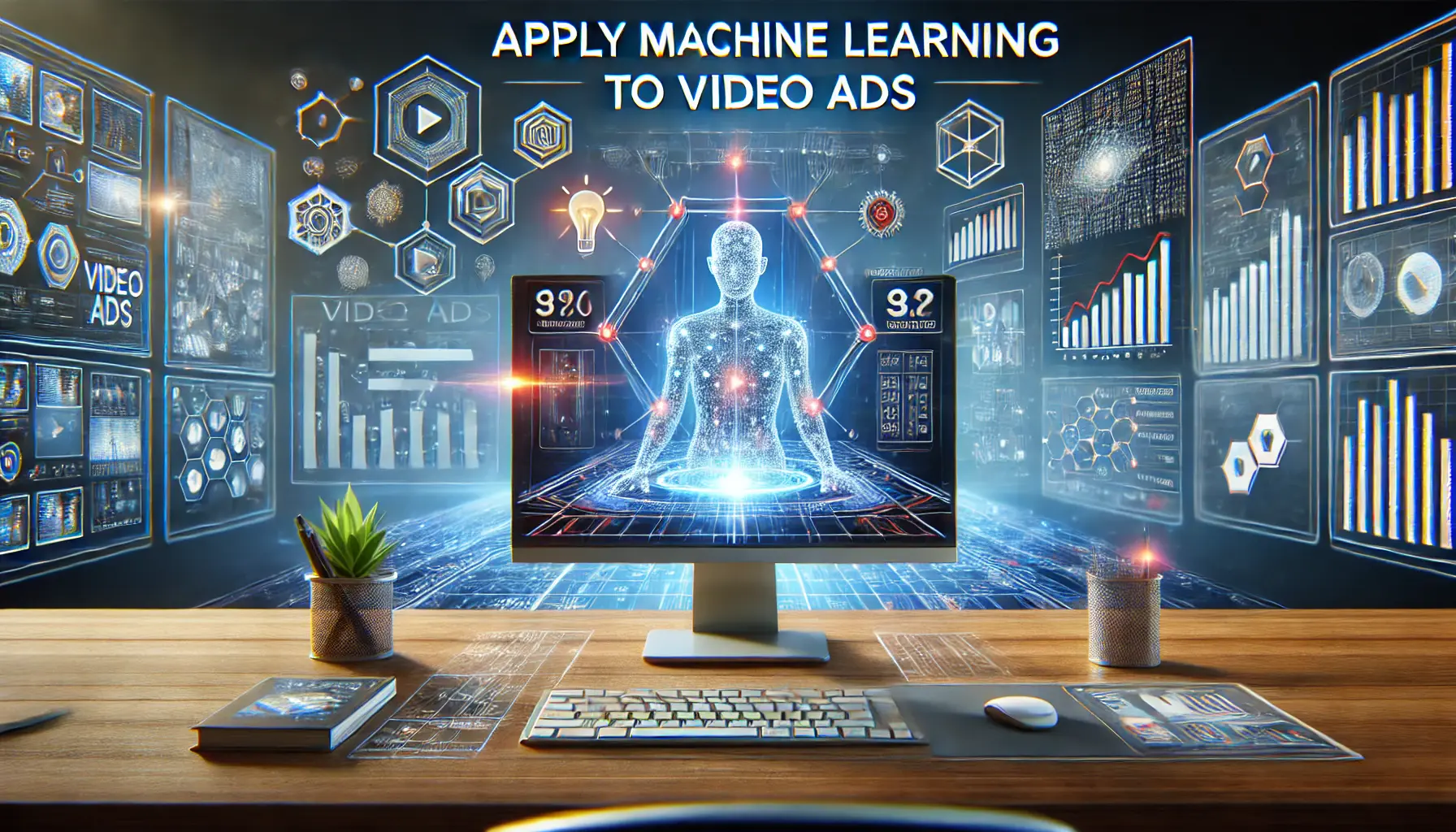
A visual representation of applying machine learning to optimize video ad performance.
Apply Machine Learning to Video Ads
Machine learning is a game-changing trend in how advertisers optimize their video advertising campaigns.
Google Ads offers a range of tools, powered by machine learning, designed to automate and enhance various elements of your campaign.
Here’s how you can leverage those tools:
- Smart Bidding: Google’s Smart Bidding automatically adjusts your bids in real time to maximize performance. This system uses machine learning to analyze audience behavior and ad performance, ensuring your ad spend is allocated efficiently.
- Automated Targeting: Google’s machine learning algorithms help identify audiences who are more likely to engage with your ads. By automatically optimizing your targeting settings, you can reach the right users without manual adjustments.
- Responsive Video Ads: Google’s responsive video ad feature allows you to upload multiple creative variations. Google’s machine learning determines which combination works best for each user, increasing engagement and conversions.
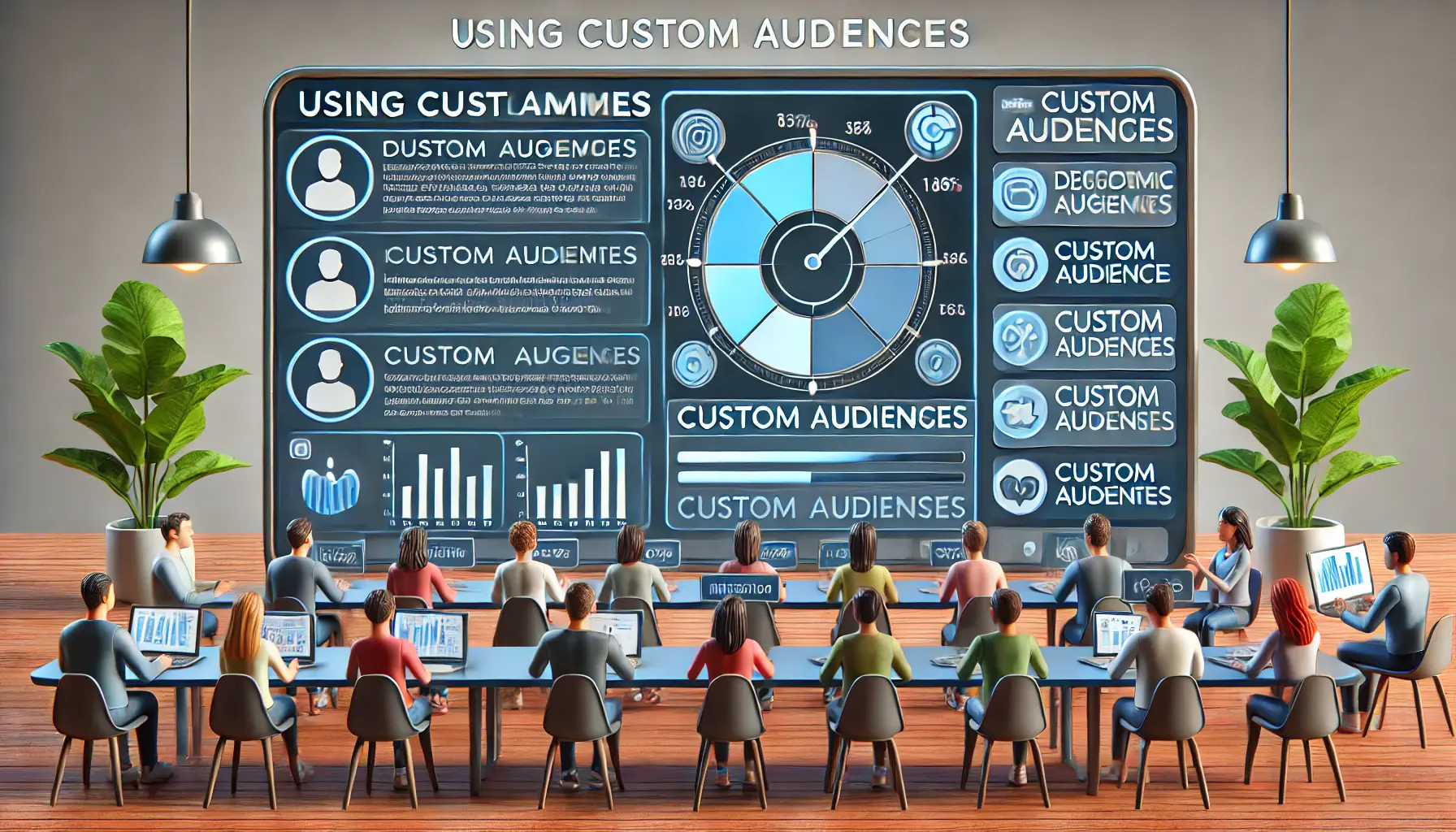
A visual representation of custom audience targeting in digital marketing.
Using Custom Audiences
Custom audiences allow you to reach the right people with the right message at the right time.
Here’s how you can use custom audiences in your video advertising:
- Custom Affinity Audiences: Build audiences based on users’ interests, such as competitors they search for or frequently visited sites. Custom affinity audiences help you target users based on more specific behaviors and interests.
- Custom Intent Audiences: Target users who have recently searched for product- or service-related terms. Capturing high-intent audiences increases your chances of driving conversions through video ads.
- Combined Audiences: Google Ads allows you to combine various audience segments, such as demographic and behavioral data, for even more granular targeting. This increases your ad’s relevance and performance.
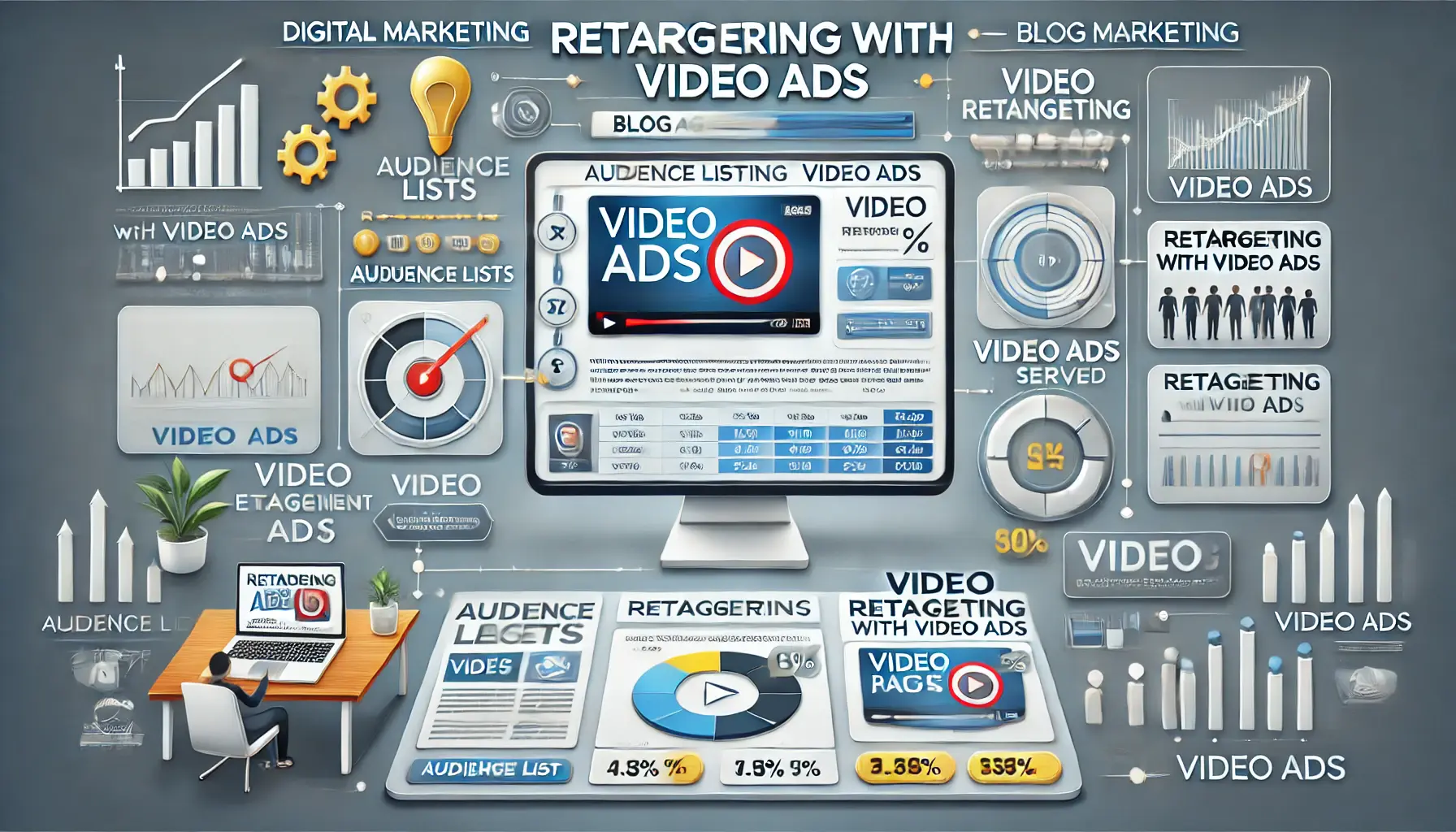
A visual representation of retargeting strategies using video ads to re-engage users.
Retargeting with Video Ads
Retargeting is one of the strongest strategies for re-engaging users who previously interacted with your brand.
Video retargeting reminds potential customers about your offerings and encourages them to return to your site to complete a desired action, such as making a purchase or signing up.
Here’s how you can use retargeting with your video ads:
- YouTube Remarketing: Set up a retargeting campaign for viewers who have watched your previous video ad or engaged with your YouTube channel. This strengthens brand awareness and keeps your brand top-of-mind with potential customers.
- Website Retargeting: Reach out to users who visited your site but did not make a purchase. Use personalized video ads to encourage them to revisit your site and complete the purchase.
- Cross-Platform Retargeting: Retargeting is not limited to a single platform. Follow users across devices and platforms, ensuring consistent messaging through video ads on both Google Display Network and YouTube.
By applying machine learning, custom audiences, and retargeting, you can vastly improve the effectiveness of your video advertising campaigns.
These advanced techniques help ensure you reach the right audience at the right time with the right message.
Applying advanced techniques like machine learning and custom audiences can elevate your video ad campaigns to achieve superior performance.
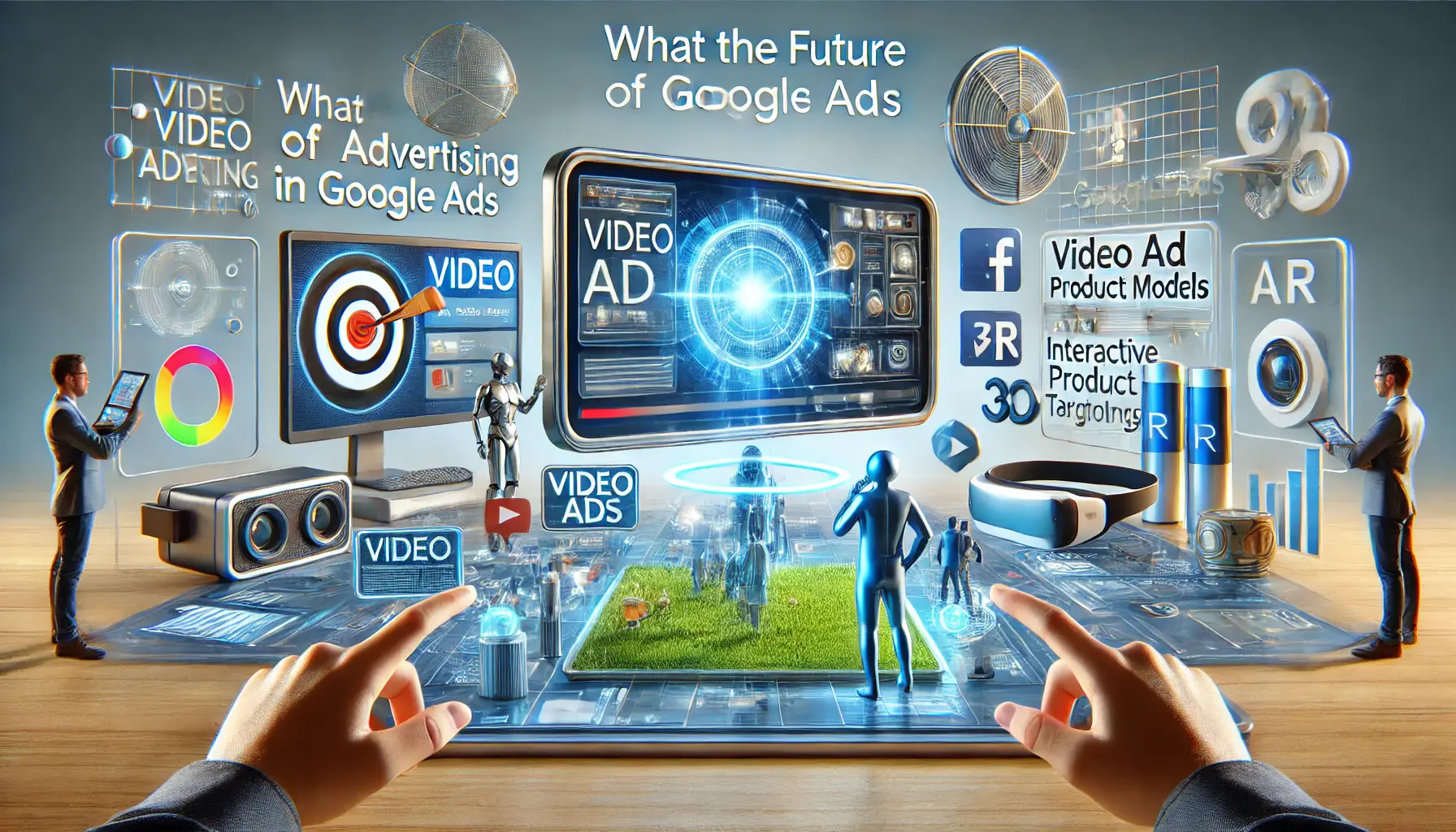
A visual representation of the future of video advertising with emerging technologies.
What the Future of Video Advertising in Google Ads Looks Like
The future of video advertising on Google Ads looks promising, with advancements in digital marketing technology such as AI and augmented reality.
These technologies open more avenues for innovative and interactive ways through which advertisers can connect with audiences on a more personal level.
In this section, we review some of the most exciting developments that will shape the future of video advertising.
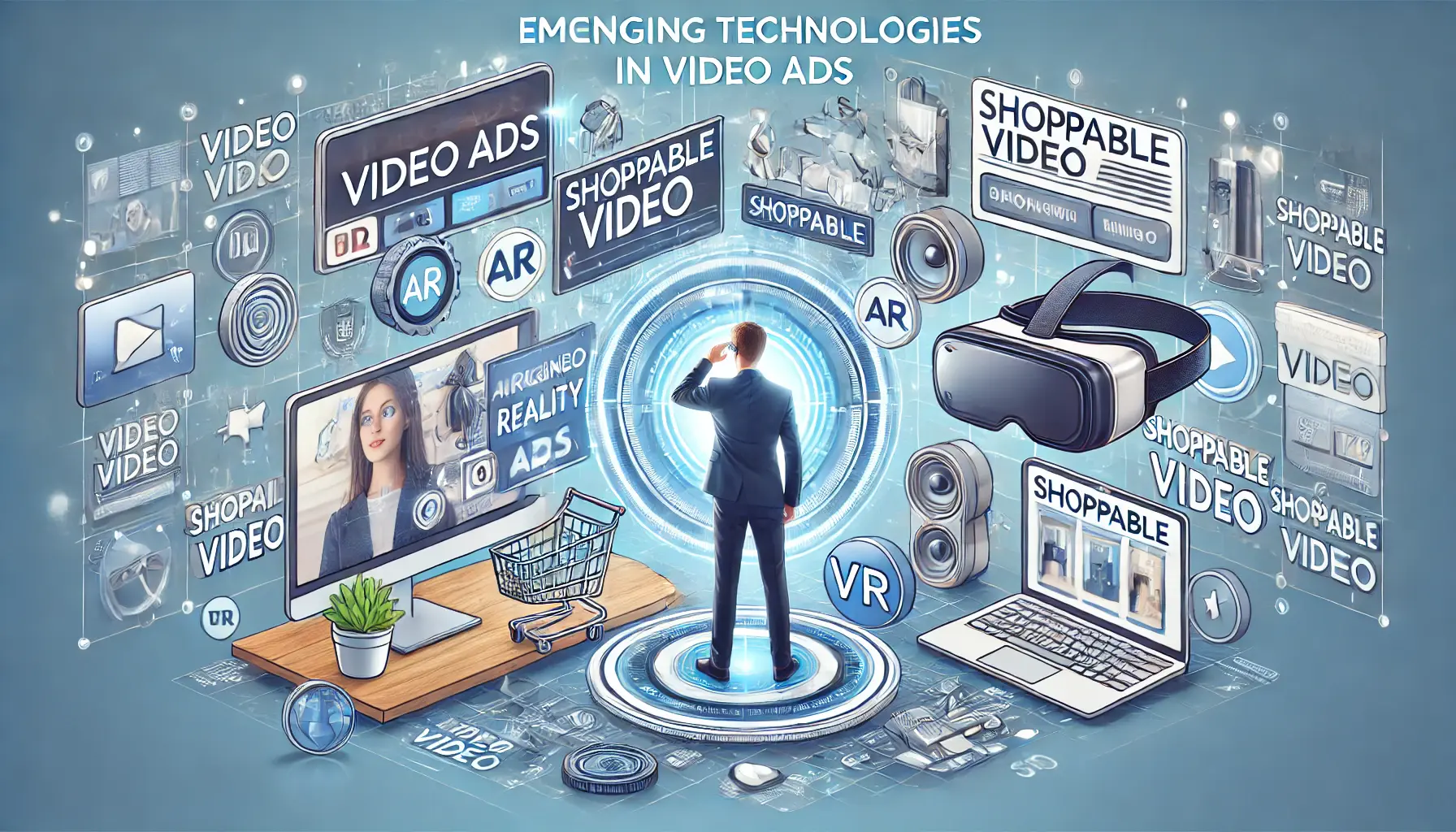
A visual representation of emerging technologies like AR, VR, and shoppable videos in video advertising.
Emerging Technologies in Video Ads
Technology continues to create opportunities for innovation in video advertising, allowing marketers to develop more immersive and engaging experiences for viewers.
Here are some of the major technologies that will play an important role in the future of video advertising:
- Augmented Reality (AR) Ads: AR is gaining traction in video advertising, providing an interactive layer that allows users to see products in real-time. AR video ads enable users to ‘try on’ products virtually or visualize how furniture would look in their homes.
- Virtual Reality (VR) Ads: VR allows for fully immersive video advertising experiences. Brands can take consumers on interactive journeys, such as virtual store tours or product demonstrations, which can lead to higher engagement and conversion rates.
- Shoppable Video Ads: As e-commerce grows, shoppable video ads have emerged as a key trend. These ads allow viewers to click on products directly within the video, turning ads into seamless shopping experiences and driving sales directly from video content.
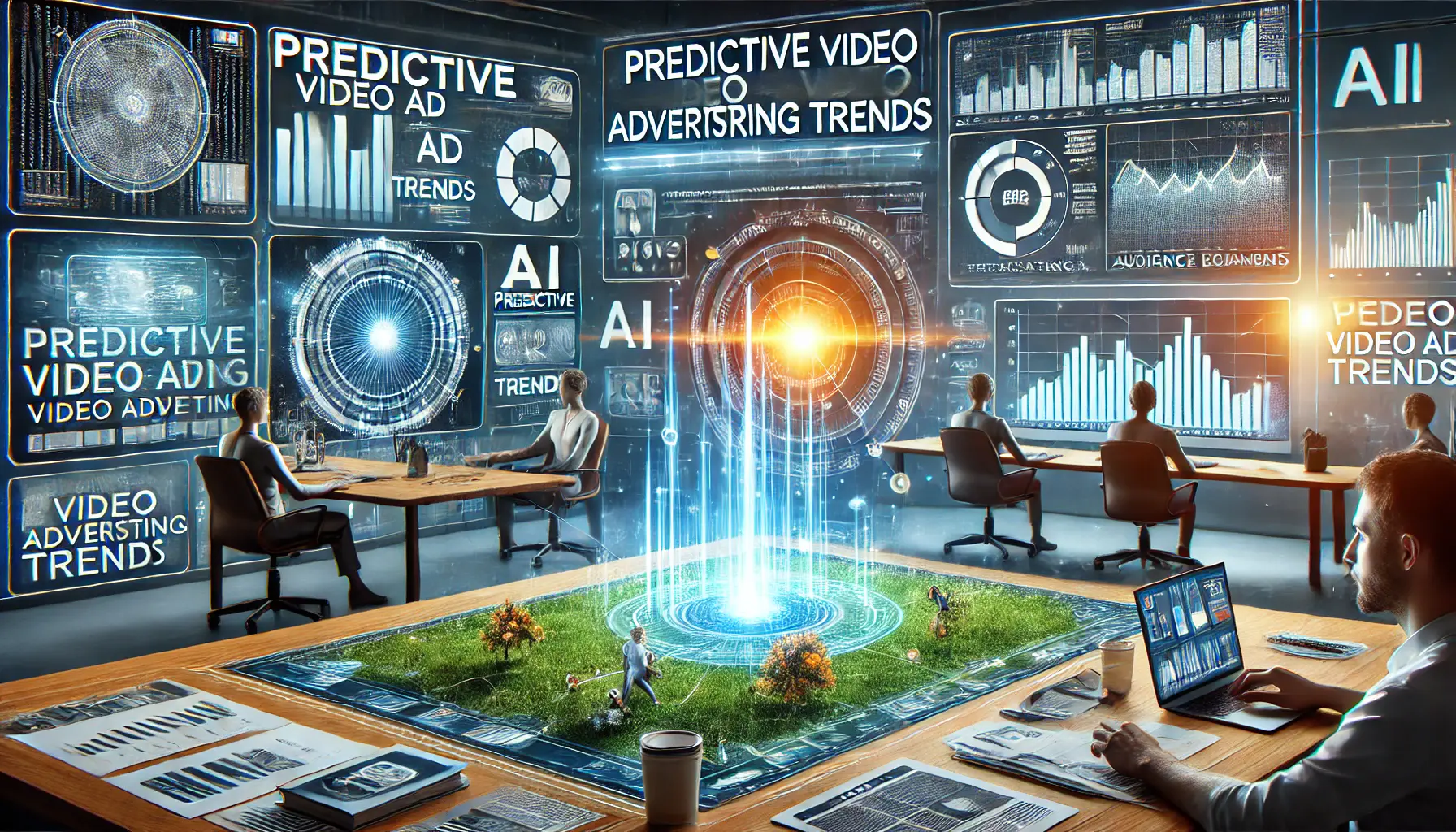
A visual representation of predictive video advertising trends using AI and data analytics.
Predictive Video Advertising Trends
Several emerging trends in video advertising focus on personalization, automation, and cross-platform integration.
Some of the key trends expected to dominate in the coming years include:
- Personalization at Scale: With continued advancements in machine learning and data-driven advertising, video ads will become increasingly personalized, allowing advertisers to deliver relevant content to individual viewers and enhance engagement and ROI.
- Programmatic Video Ads: The automation of buying and selling video ad inventory in real-time will enable advertisers to reach their target audience more efficiently and optimize ad spending based on performance metrics.
- Cross-Platform Video Campaigns: As users consume video content across multiple devices, advertisers will need to run cross-platform campaigns that ensure seamless messaging across mobile, desktop, and connected TV (CTV).
- Interactive Video Ads: Interactive video ads, where viewers can engage with the content by answering questions, making choices, or participating in polls, will enhance user engagement and provide valuable data for marketers.
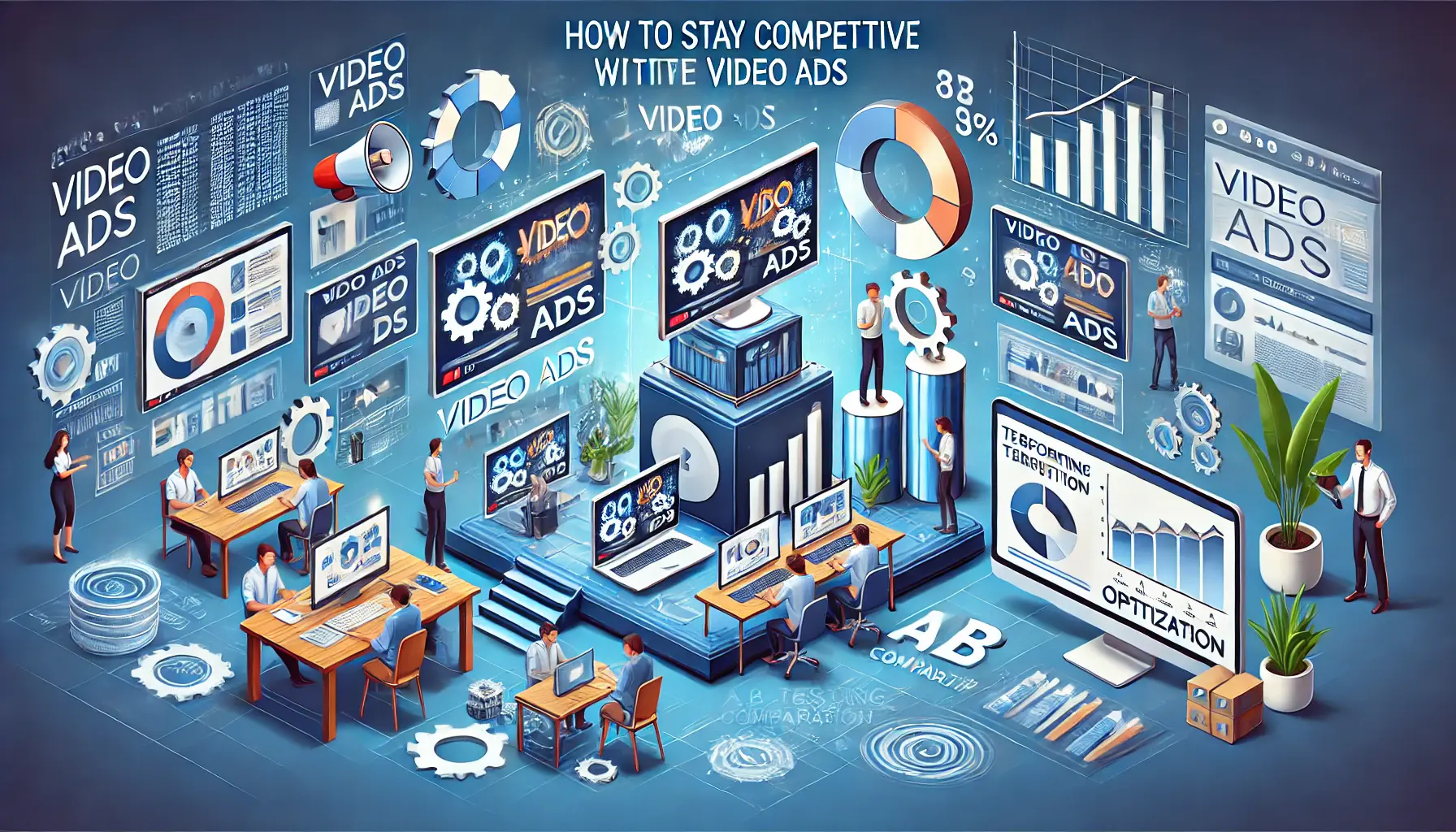
A visual representation of strategies to stay competitive with video ads using continuous optimization and data-driven decisions.
How to Stay Competitive with Video Ads
To stay competitive in the evolving world of video advertising, marketers must adopt strategies that embrace new technologies and trends.
Here are some tips for keeping your video ads ahead of the curve:
- Invest in New Technologies: Keep an eye on emerging technologies such as AR, VR, and AI-powered personalization tools. Early adoption of these technologies will allow you to create unique and engaging video experiences that stand out in today’s crowded marketplace.
- Embrace Data-Driven Insights: Use findings from Google Ads and YouTube Analytics to gain insights into viewer behavior, optimize ad targeting, and drive performance improvements.
- Take a Mobile-First Approach: As mobile video consumption continues to rise, focus on ensuring your video ads are optimized for mobile devices with fast load times, clear visuals, and easy-to-read text.
- Test and Optimize: Continuously test different video ad formats, lengths, and creative elements. A/B testing will help you determine what resonates most with your audience and improve the effectiveness of your video ads.
The future of video advertising on Google Ads is bright.
By embracing new technologies and trends, and focusing on personalized and data-driven content, you can ensure that your video ads remain competitive and effective in the evolving digital landscape.
The future of video advertising lies in adopting emerging technologies like ARAugmented Reality, a technology that overlays digital content onto the real world., VRVirtual Reality, a simulated experience that can be similar to or completely different from the real world., and shoppable ads, which provide interactive and engaging ad experiences.
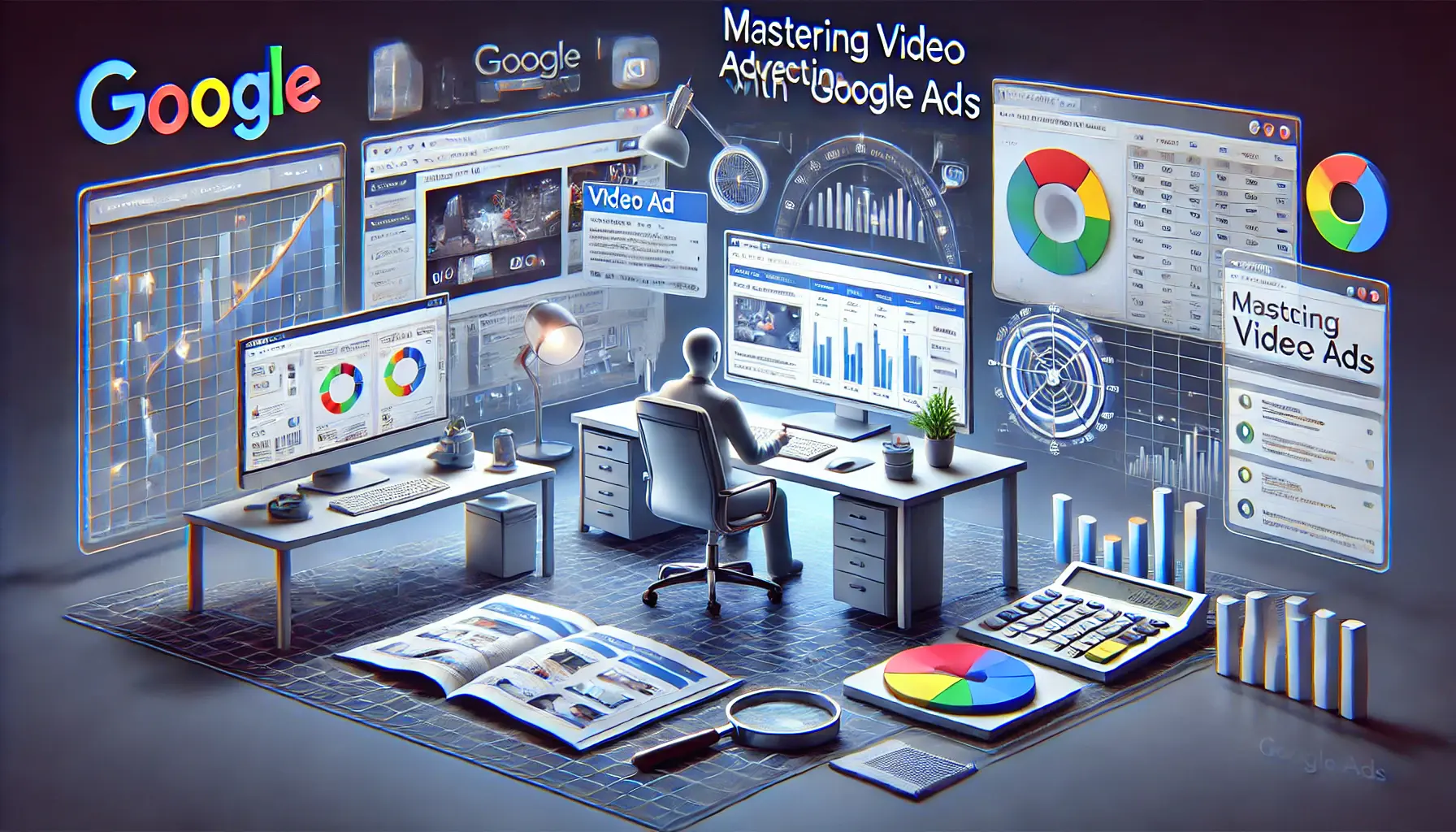
A visual representation of mastering video advertising with Google Ads through campaign creation and optimization.
Mastering Video Advertising with Google Ads
Video advertising has emerged as one of the most powerful tools in the field of digital marketing, and when combined with advanced Google Ads features, it continues to impress even the most skeptical advertisers.
From the basic setup of campaigns to optimizing video ads, and even incorporating cutting-edge technologies such as machine learning, marketers have endless opportunities to succeed with video advertising in Google Ads.
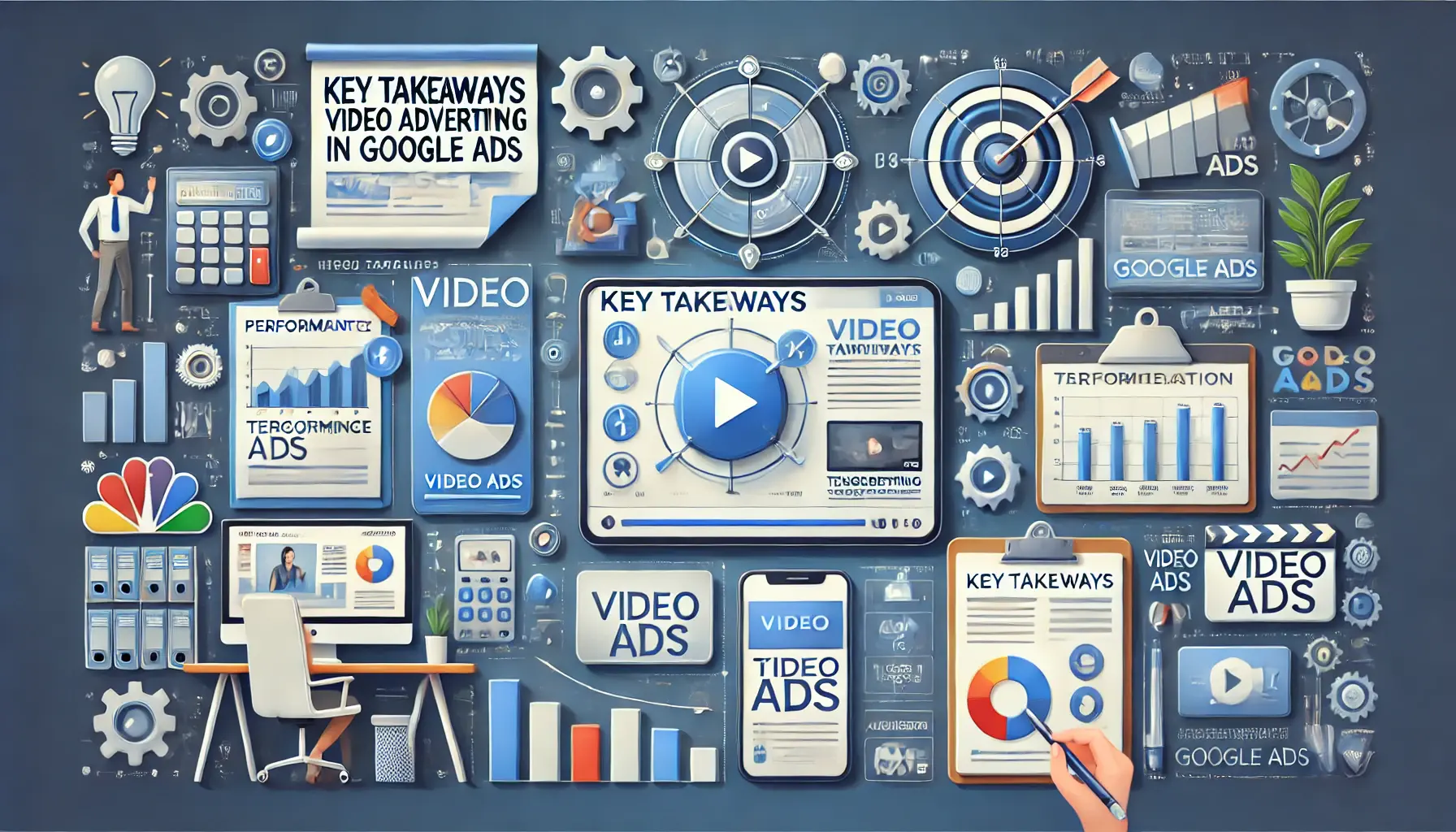
A visual representation of key takeaways from video advertising in Google Ads, focusing on engagement, optimization, and audience reach.
Key Takeaways from Video Advertising in Google Ads
Throughout this article, we covered all the essential steps and strategies to create and optimize video ads in Google Ads.
Here are some key takeaways:
- Set Up for Success: It all starts with a solid foundation, from choosing the right video ad format to targeting the right audience and creating engaging content that captures attention within seconds. Google Ads offers multiple formats, from TrueView In-Stream ads to Bumper ads, each serving different marketing objectives.
- Optimize for Maximum Performance: Continuous optimization is essential for driving results. By leveraging A/B testing, monitoring key metrics such as view rate, CTR, and CPV, and setting your budget strategically, you can ensure your video ads are performing at their best.
- Advanced Strategies: The integration of machine learning and custom audiences enables advertisers to target specific audiences more effectively and automate various elements of their campaigns. Additionally, retargeting with video ads allows advertisers to re-engage users who have previously interacted with their brand.
- Dive into the Future of Video Ads: Emerging technologies such as augmented reality (AR), virtual reality (VR), and shoppable video ads are continuously changing the way video advertising is conducted. Personalization, automation, and cross-platform integration will be crucial trends shaping the future of video advertising in Google Ads.
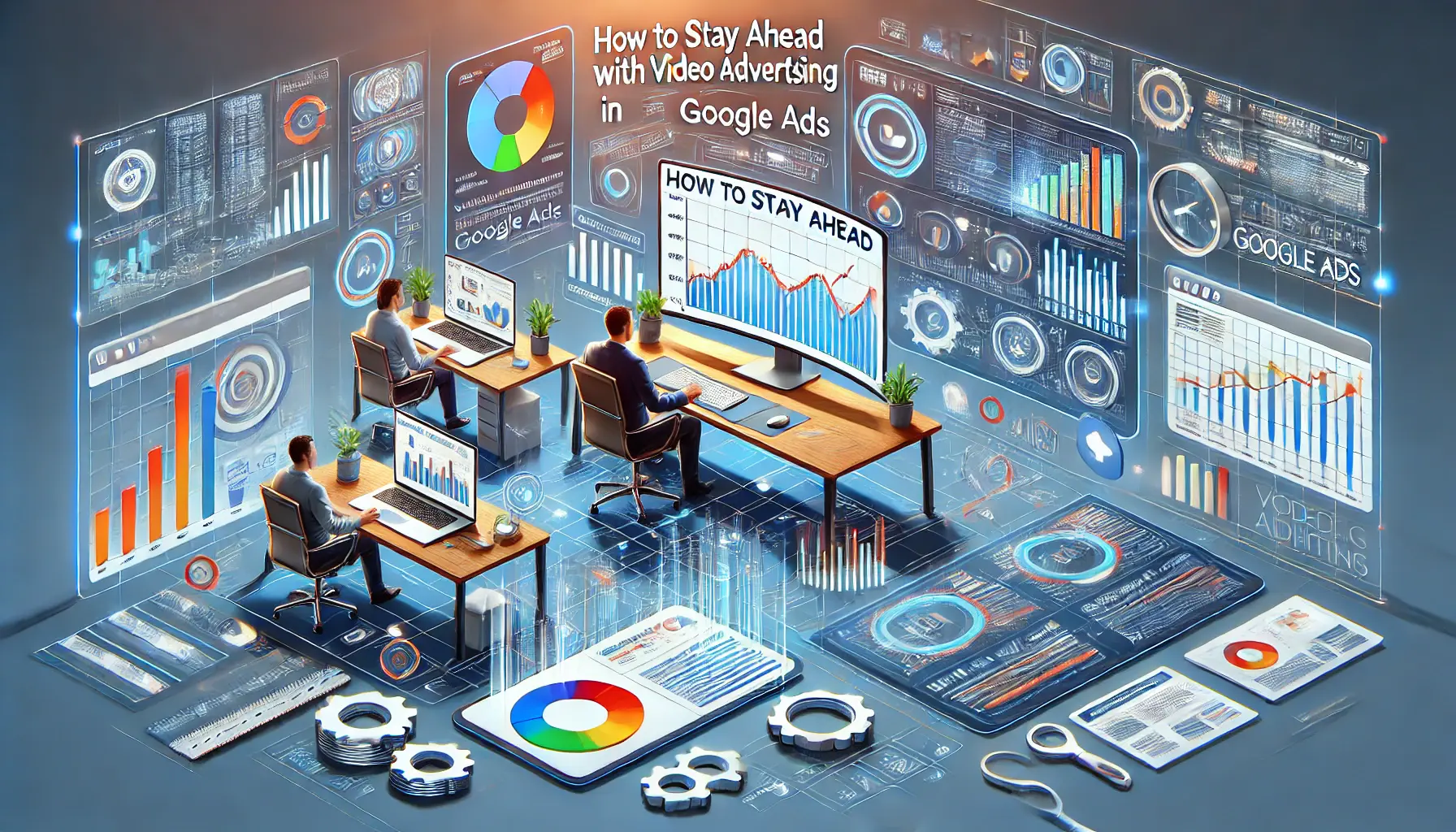
A visual representation of staying ahead in video advertising by using advanced analytics and optimization tools.
How to Stay Ahead with Video Advertising in Google Ads
As the digital marketing landscape evolves, staying ahead requires a commitment to innovation and adaptability.
Marketers who keep up with trends and invest in new technologies will be better positioned to succeed.
Focus on mobile-first approaches, use data-driven insights, and continually test and optimize your campaigns for better performance.
This will ensure your video ads remain competitive and effective over time.
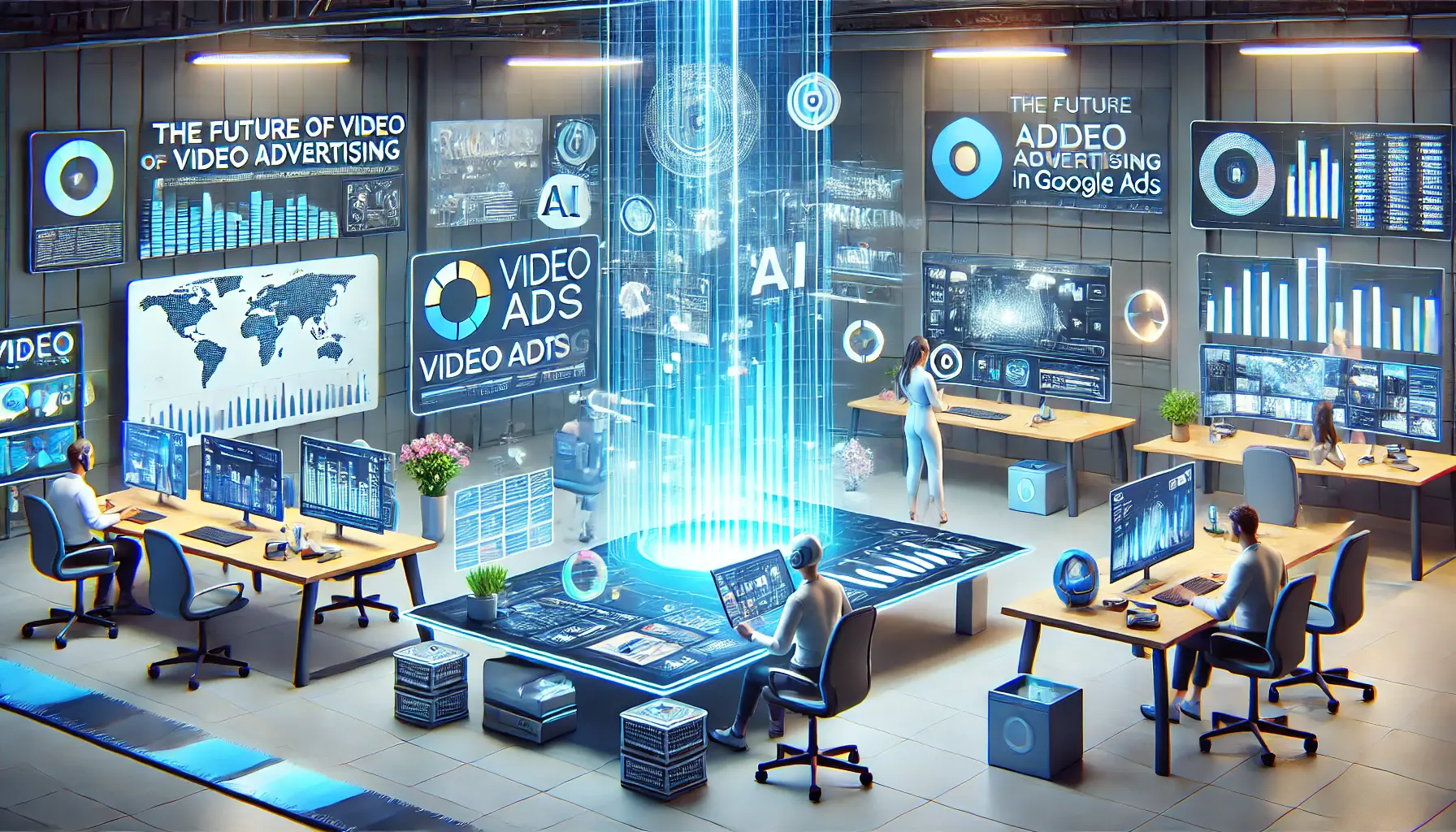
A visual representation of the future of video advertising in Google Ads, enhanced by AI, machine learning, and immersive technologies.
The Future of Video Advertising in Google Ads
The future of video advertising in Google Ads is bright.
With the rapid evolution of AI, machine learning, and interactive technologies, advertisers can create more personalized and engaging video experiences than ever before.
By embracing these trends and technologies, you can unlock the full potential of video advertising, reach your target audience more effectively, and achieve higher returns on investment.
Ultimately, video advertising in Google Ads presents endless possibilities for marketers.
From targeting and optimization to creative innovation, the range of tools and strategies available will help you achieve your business goals and stay competitive in the increasingly aggressive digital marketplace.
Mastering video advertising on Google Ads involves continuous learning, from setting up the right campaigns to leveraging advanced strategies for optimization and targeting.
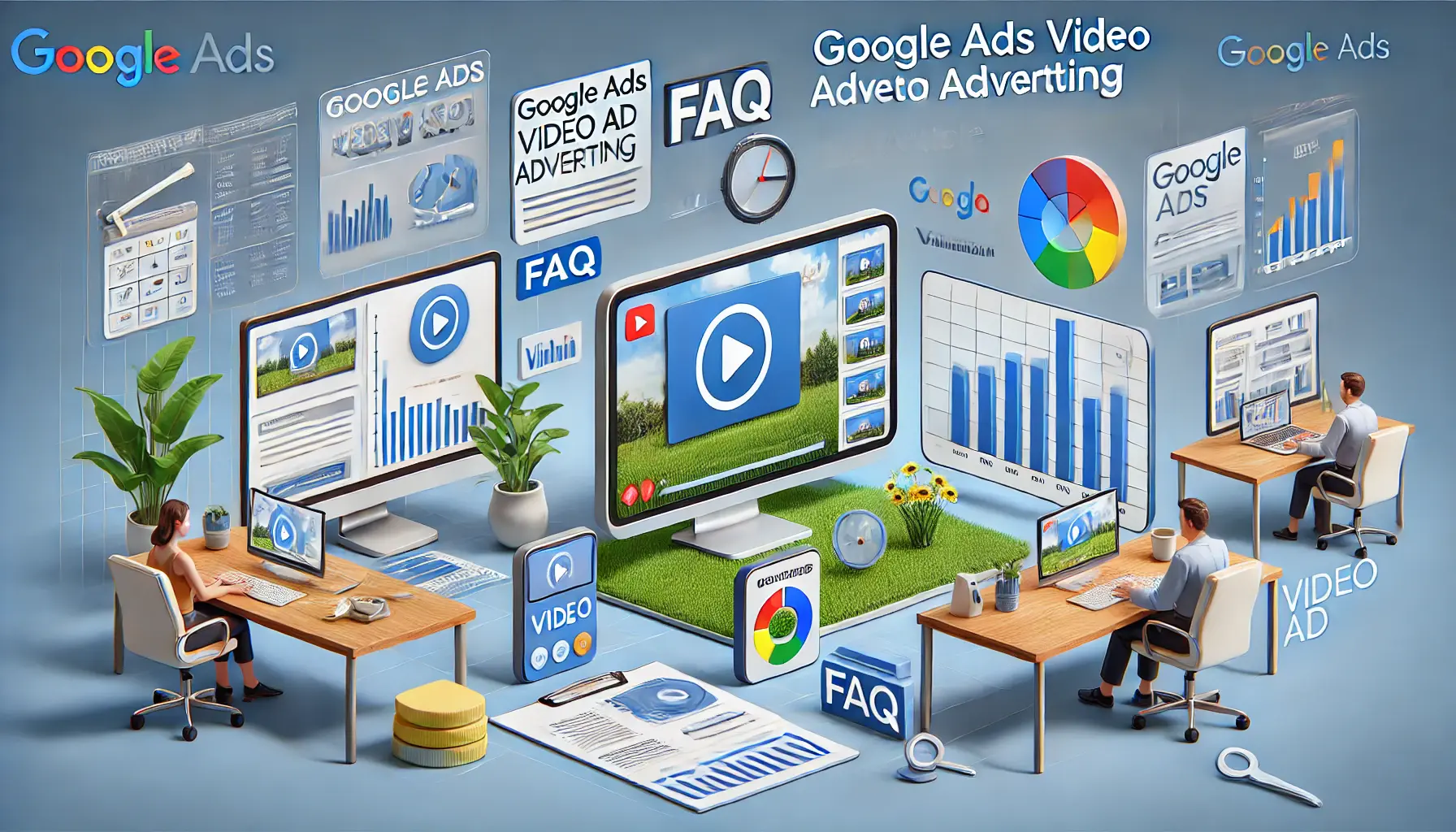
A visual representation of FAQs about Google Ads video advertising, featuring tools, analytics, and video ad formats.
Your campaigns can be managed by an agency specialized in Google Ads, check out our service page.
Google Ads Video Advertising FAQs
Video advertising in Google Ads allows for effective audience engagement.
Below are some common questions and answers that will help you understand the process and strategies involved in creating successful video ads.
Video advertising through Google Ads entails creating video-enabled campaigns across platforms like YouTube and the Google Display Network to capture brand attention and achieve marketing objectives through dynamic, visually engaging content.
To create a video ad campaign, select the “Video” campaign type in Google Ads.
Set your goals, define your audience, choose the right video format, and allocate your budget.
Finally, launch your campaign with targeted video content.
Optimize video ads by monitoring key metrics like view rate and CTR.
A/B test variations, adjust your bidding strategy, and refine targeting options to ensure your ads reach the most relevant audience for improved effectiveness.
Machine learning automates bid adjustments, targets ads to the right audience, and delivers personalized video content.
Google Ads uses machine learning to analyze performance data, continuously improving the efficiency of your video ad campaign.
Shoppable video ads allow users to click directly on products displayed in the ad, turning video content into a shopping experience.
This shortens the purchase journey, making it convenient for users to buy products directly from the ad.
Mobile optimization is essential for video ads, as most users consume video content on mobile devices.
Ensure your video ads load quickly, have clear visuals, and are easy to engage with on smaller screens to maximize mobile performance.
AR and VR video ads offer immersive experiences where users can interact with the ad.
AR allows users to visualize products in real time, while VR provides fully immersive environments, boosting engagement and conversions.
